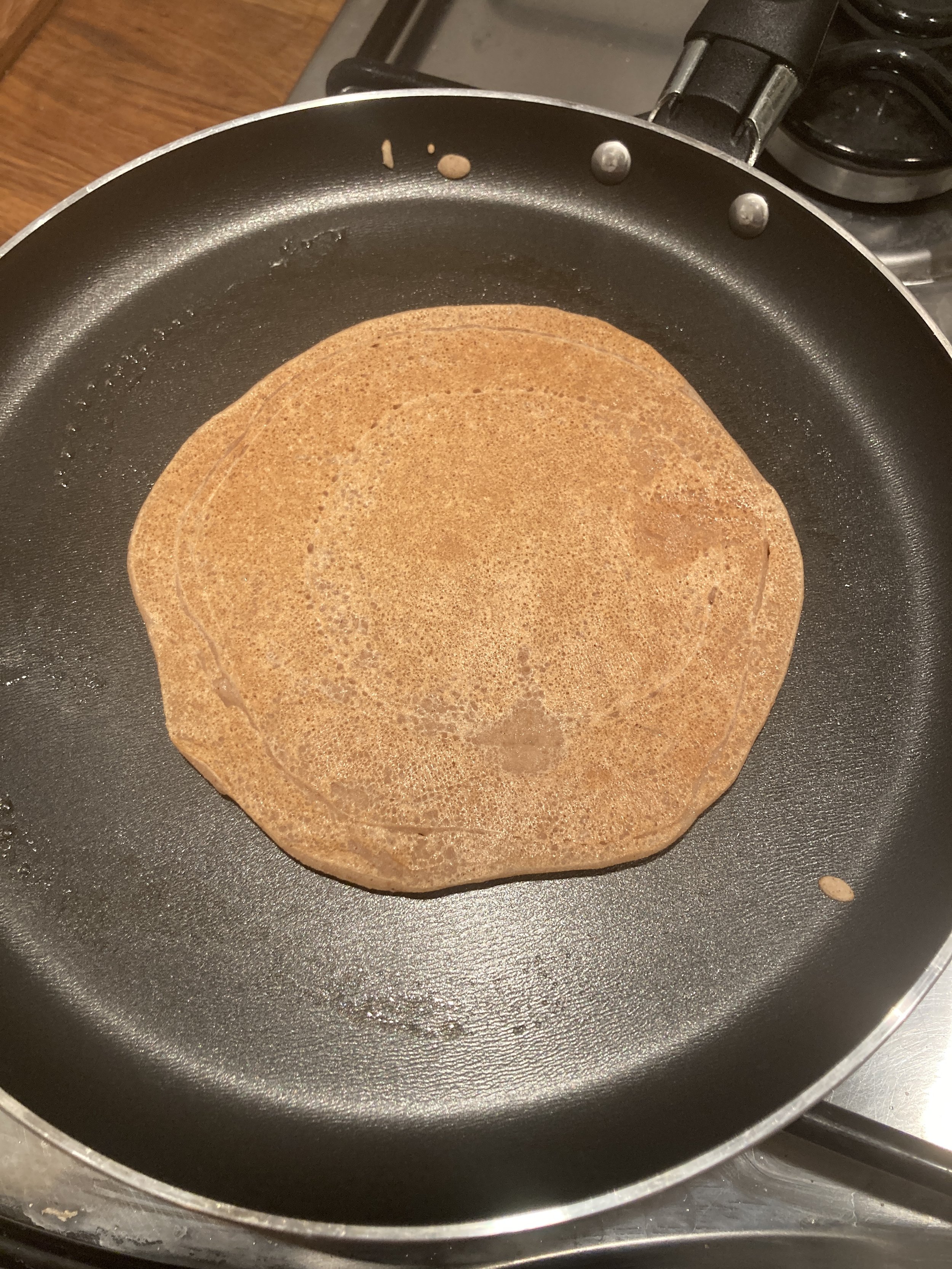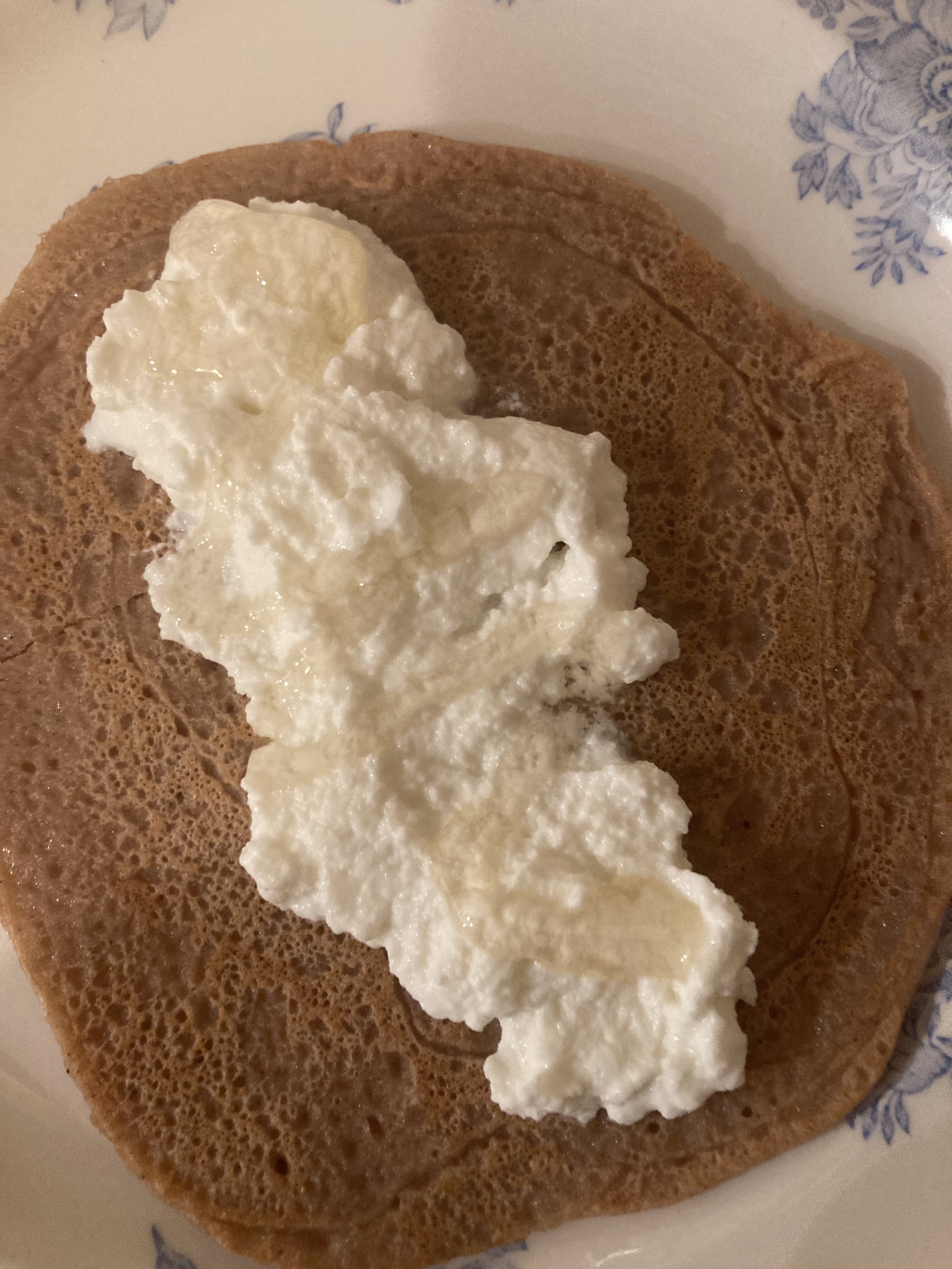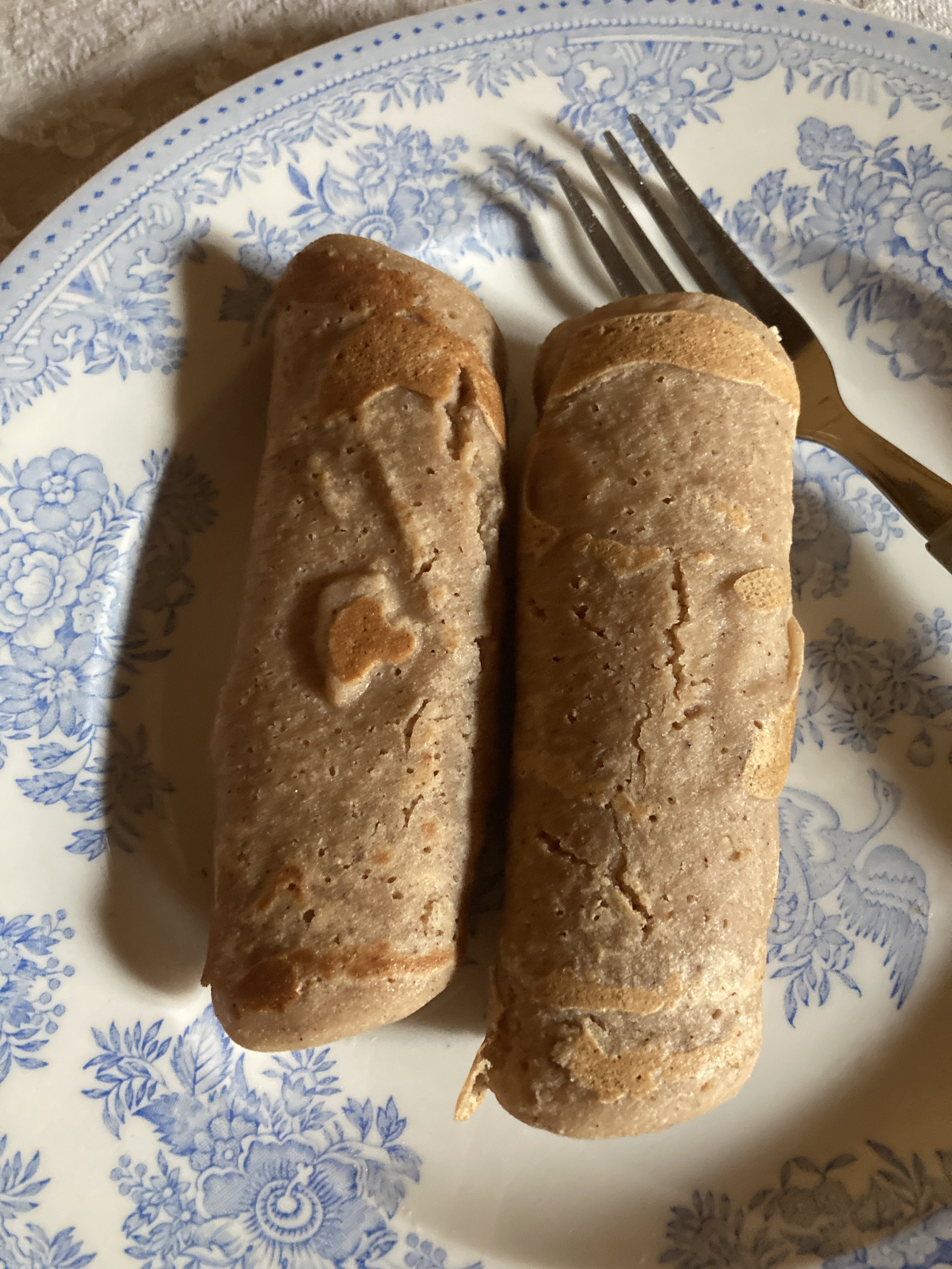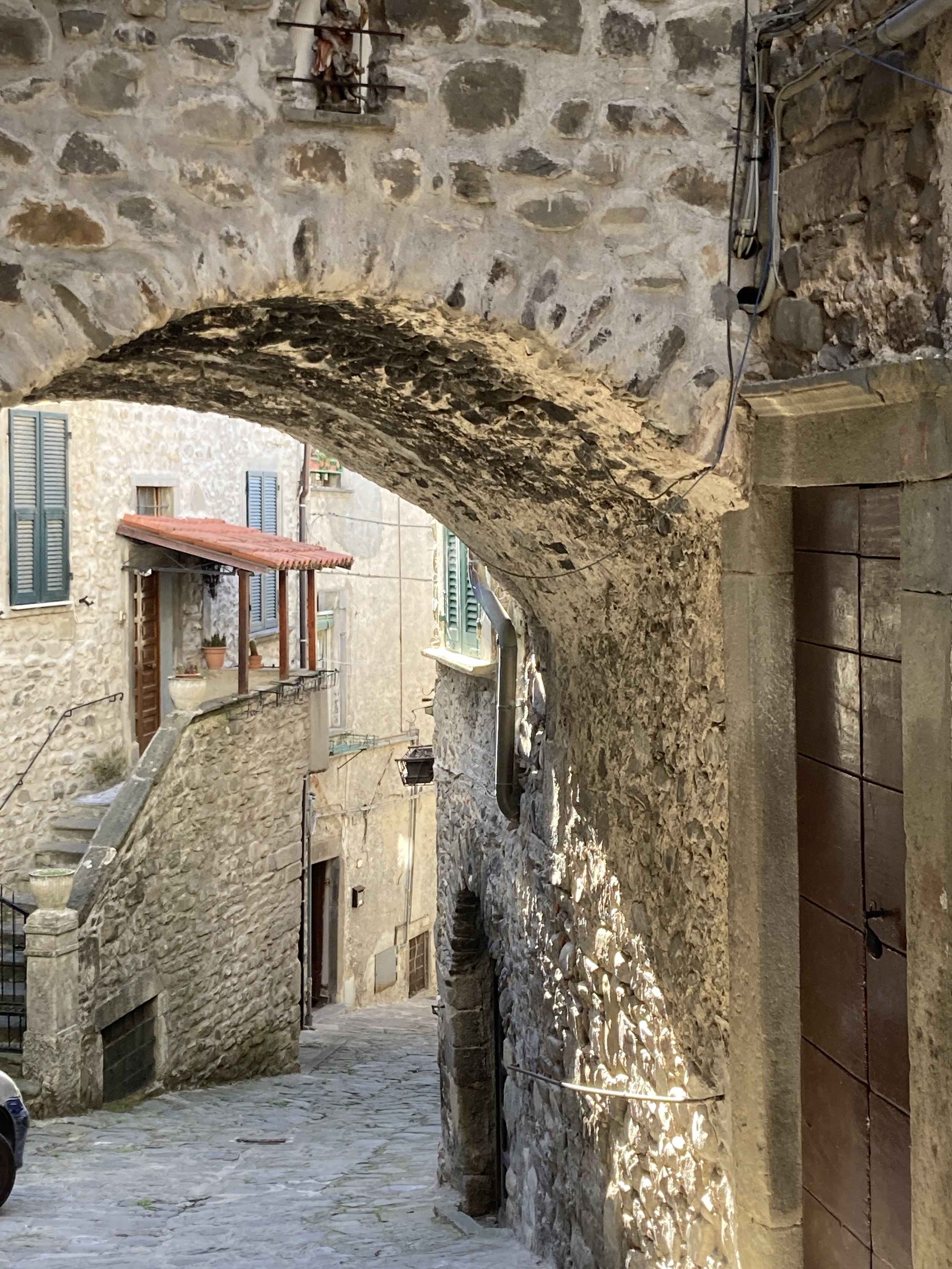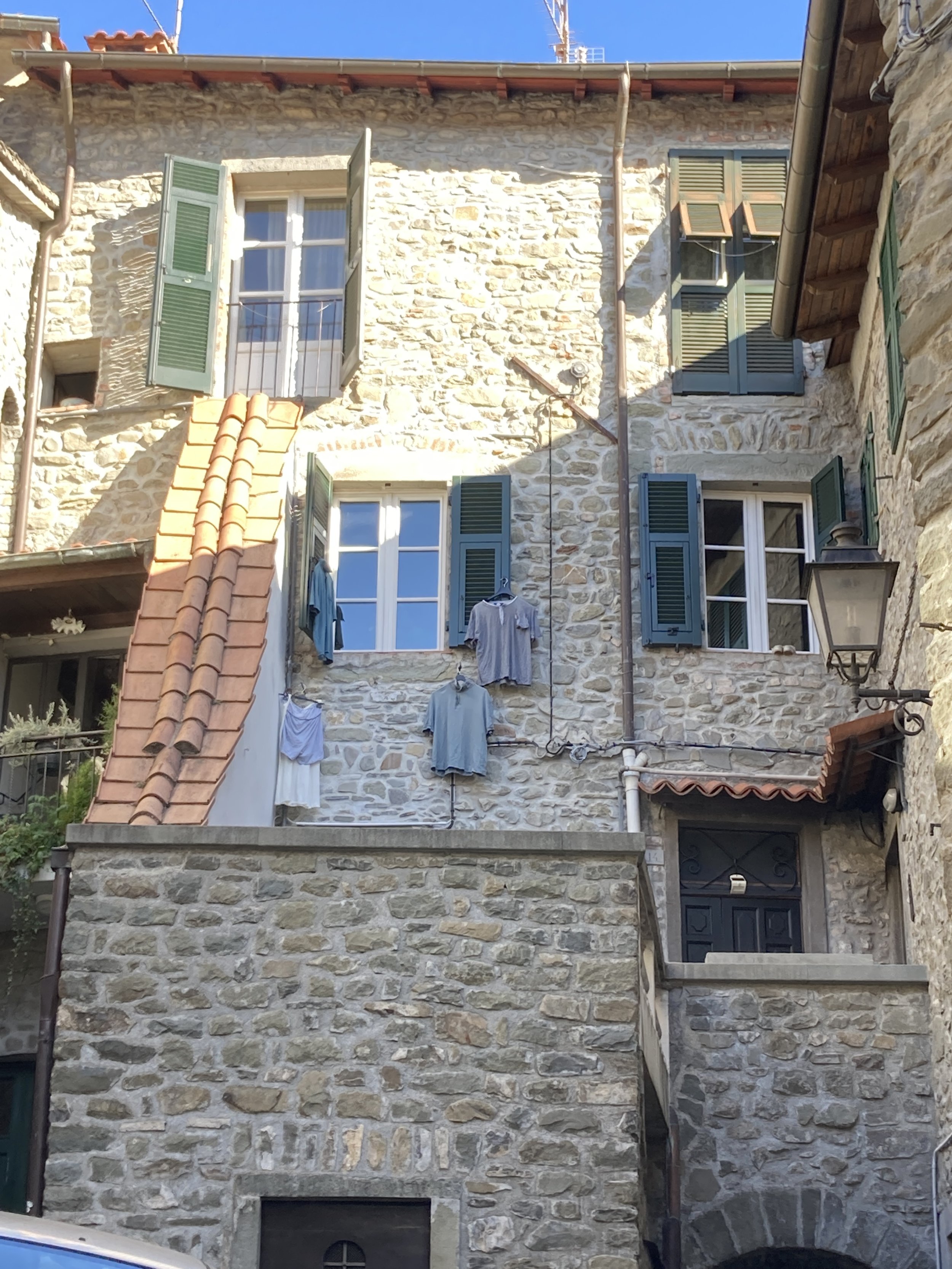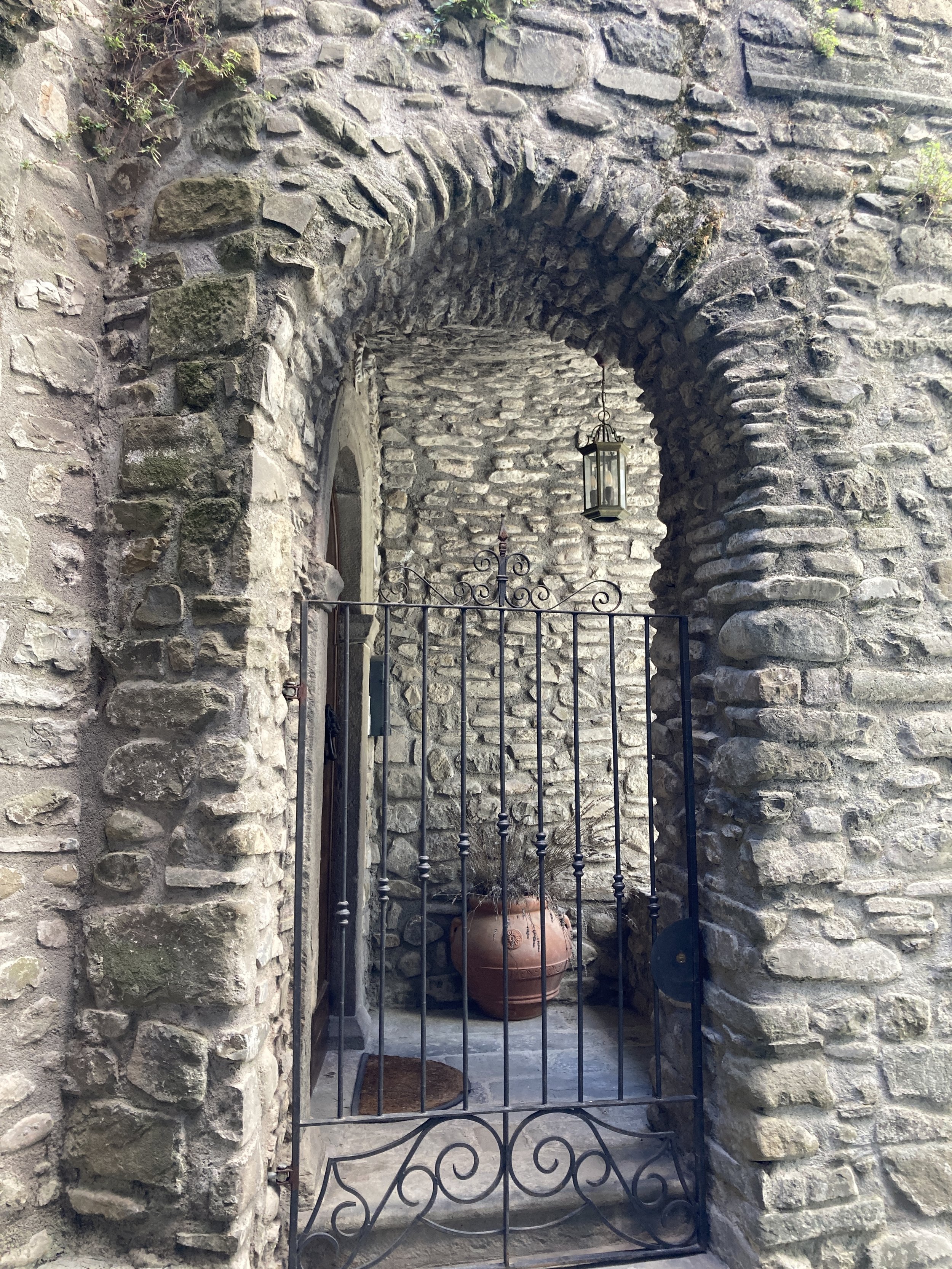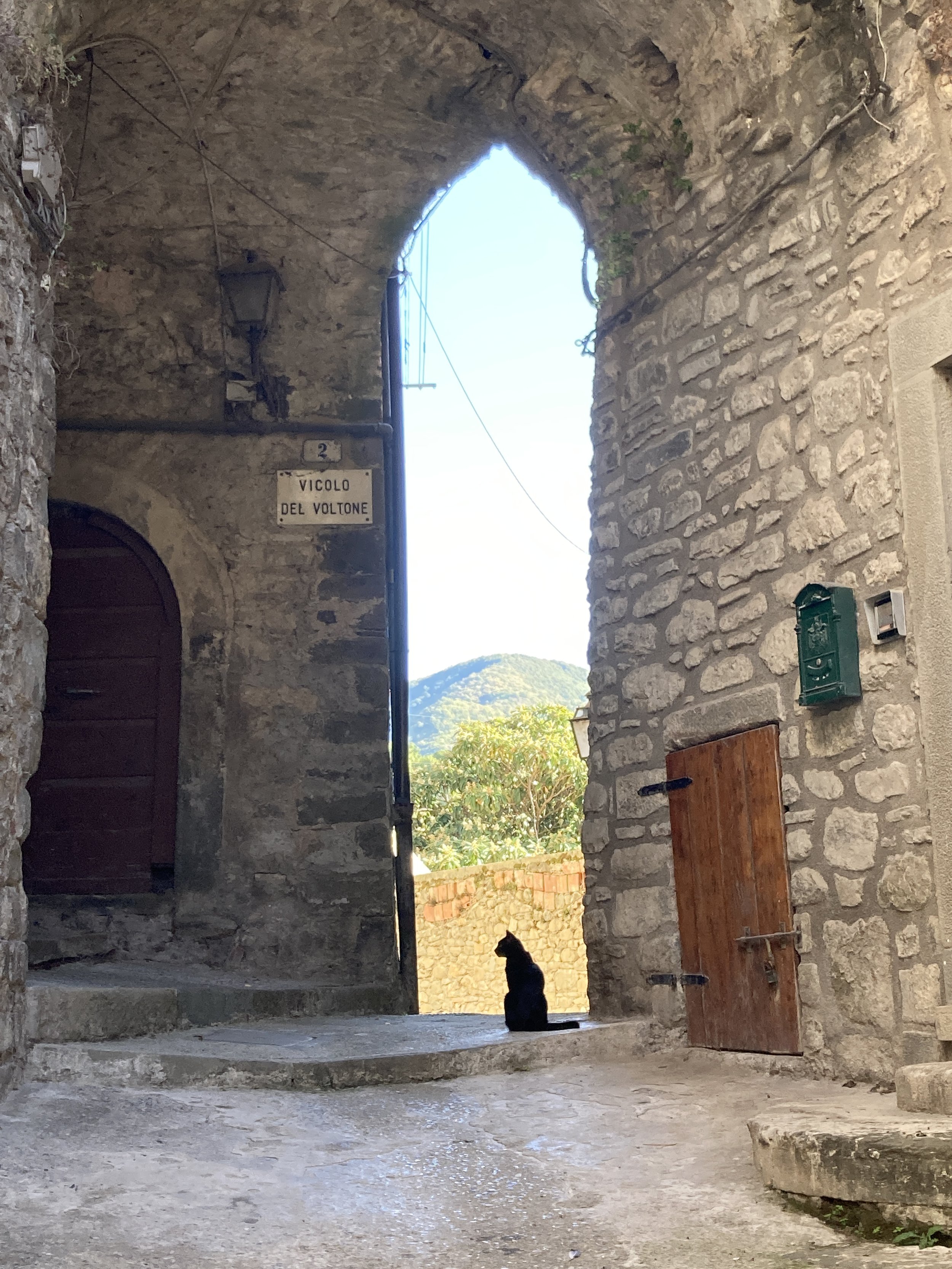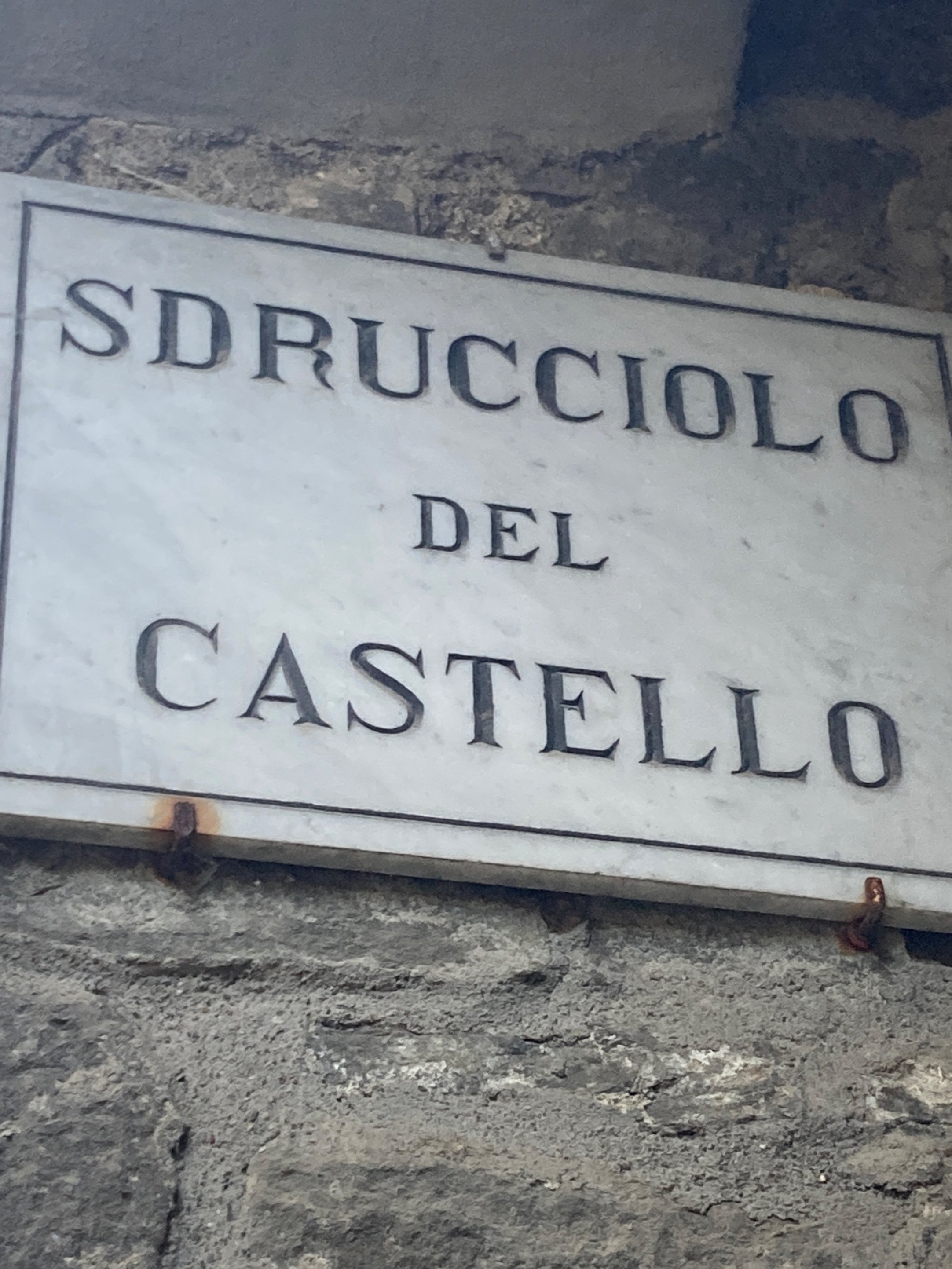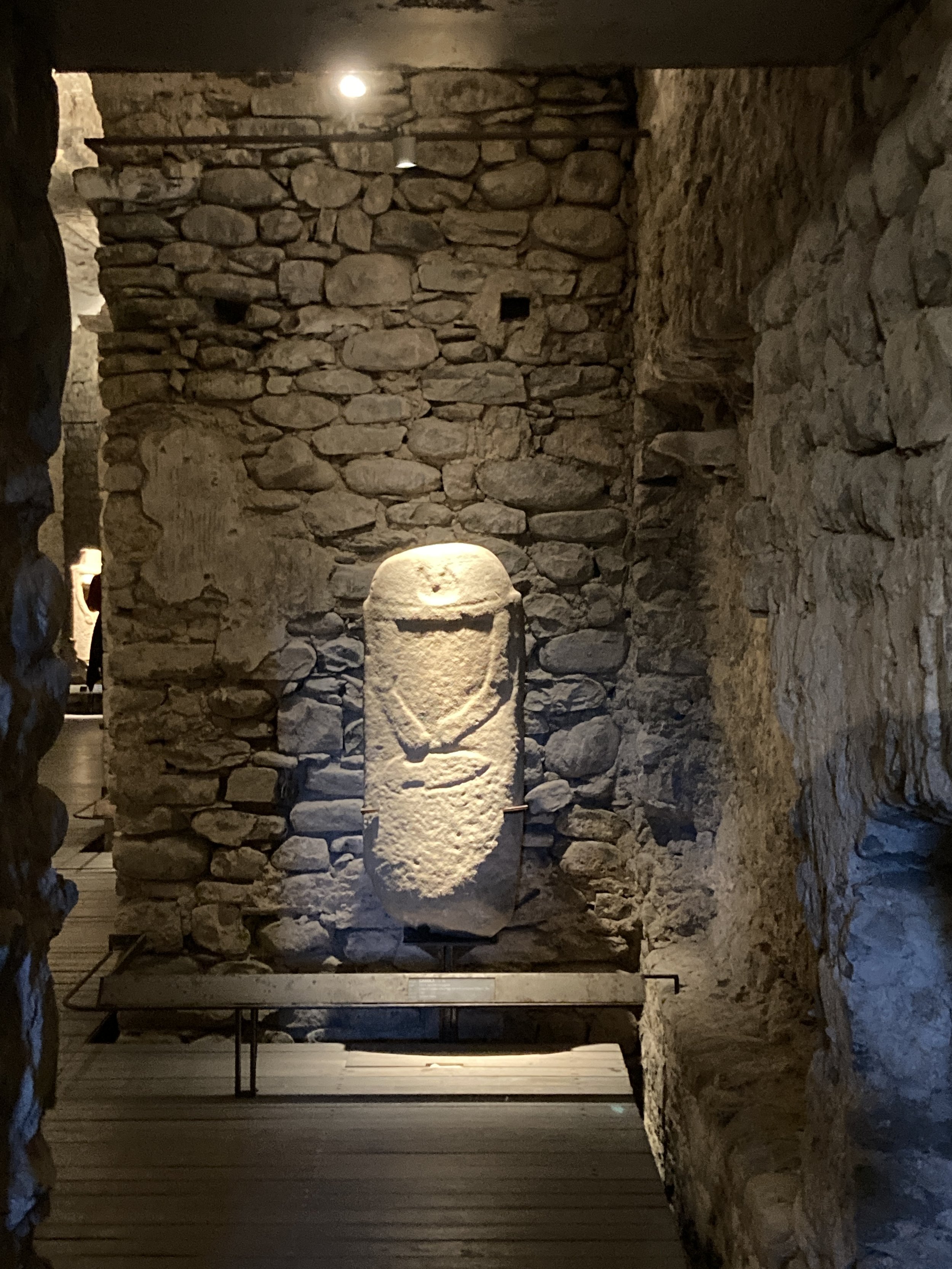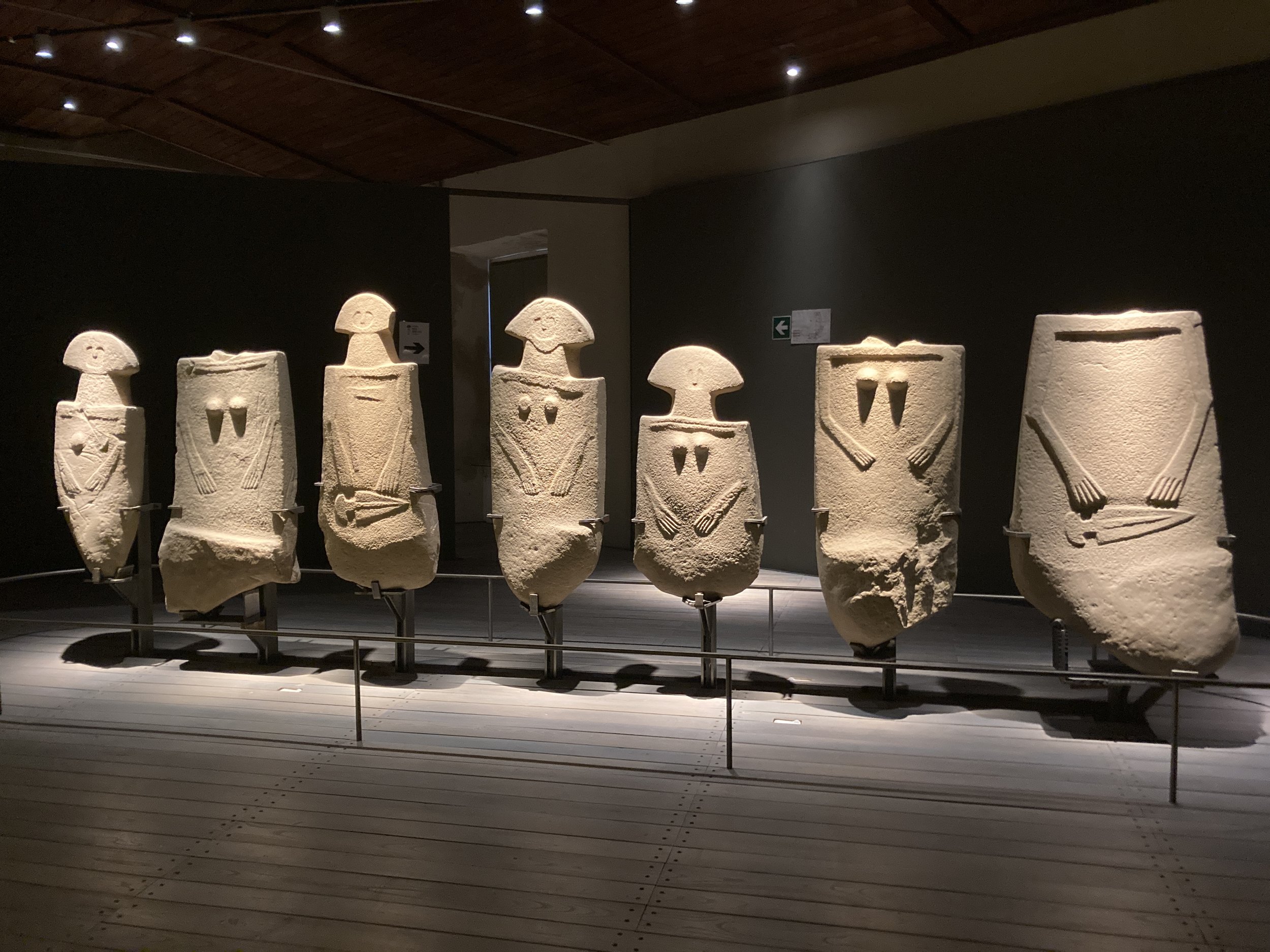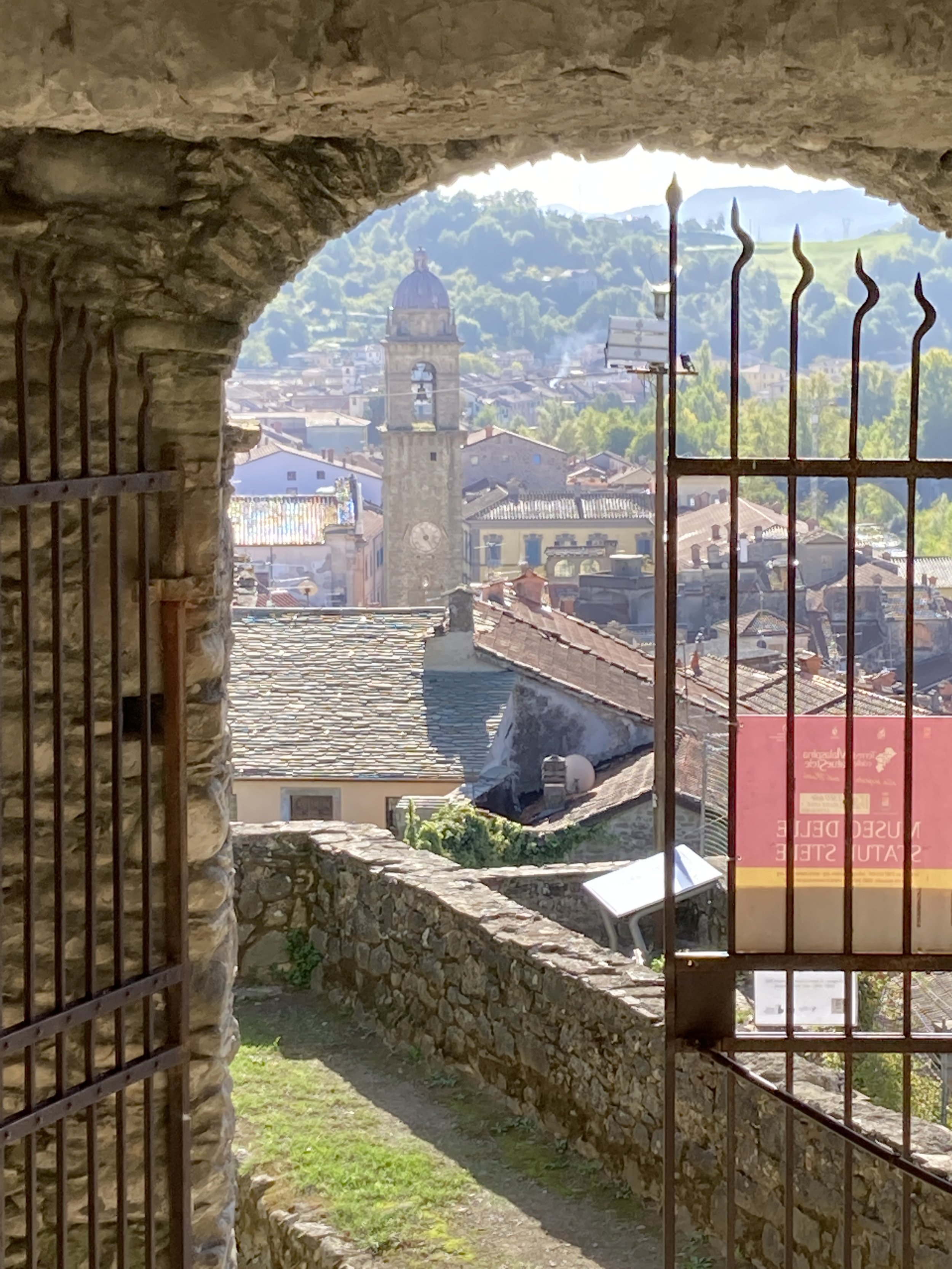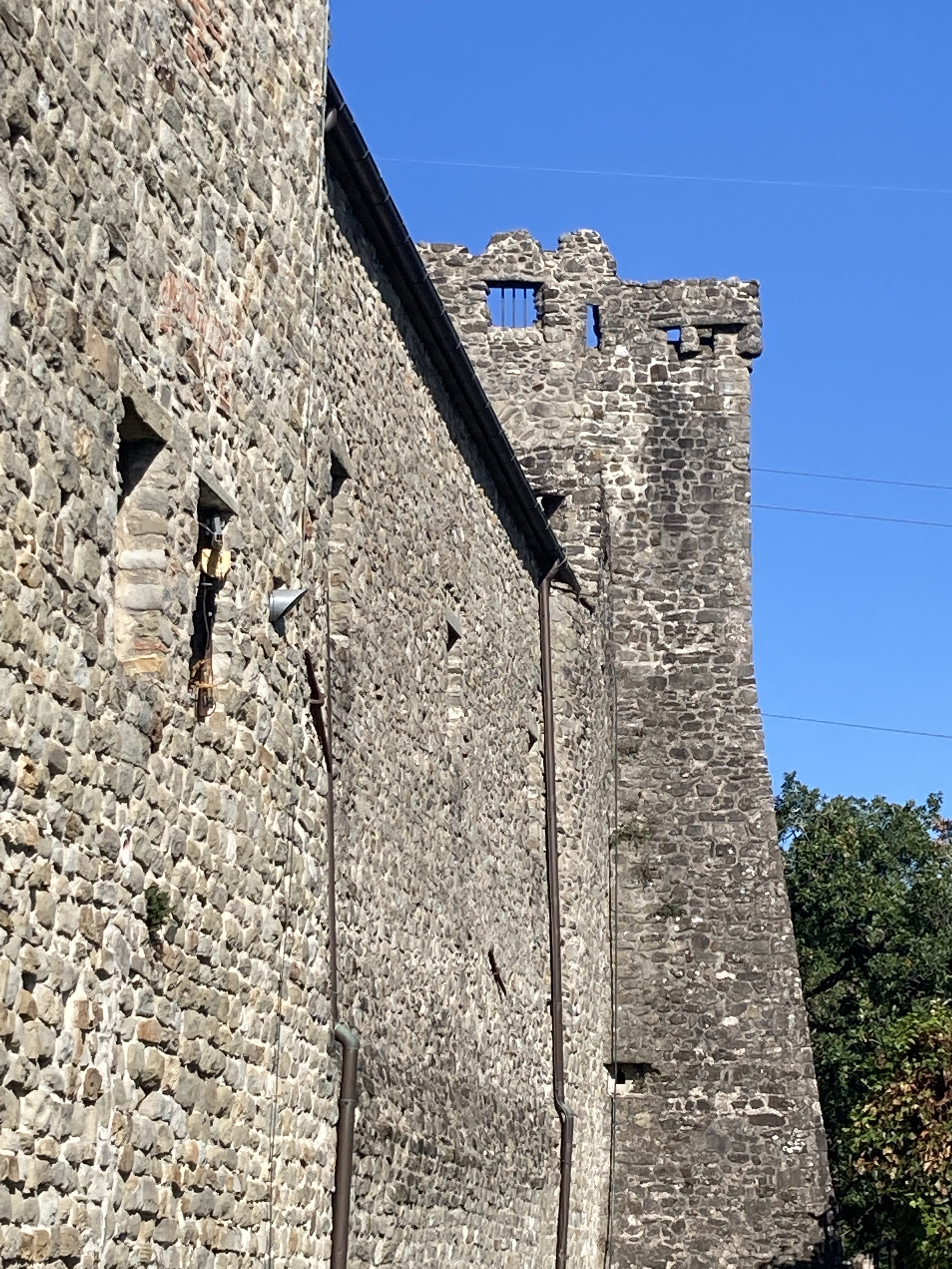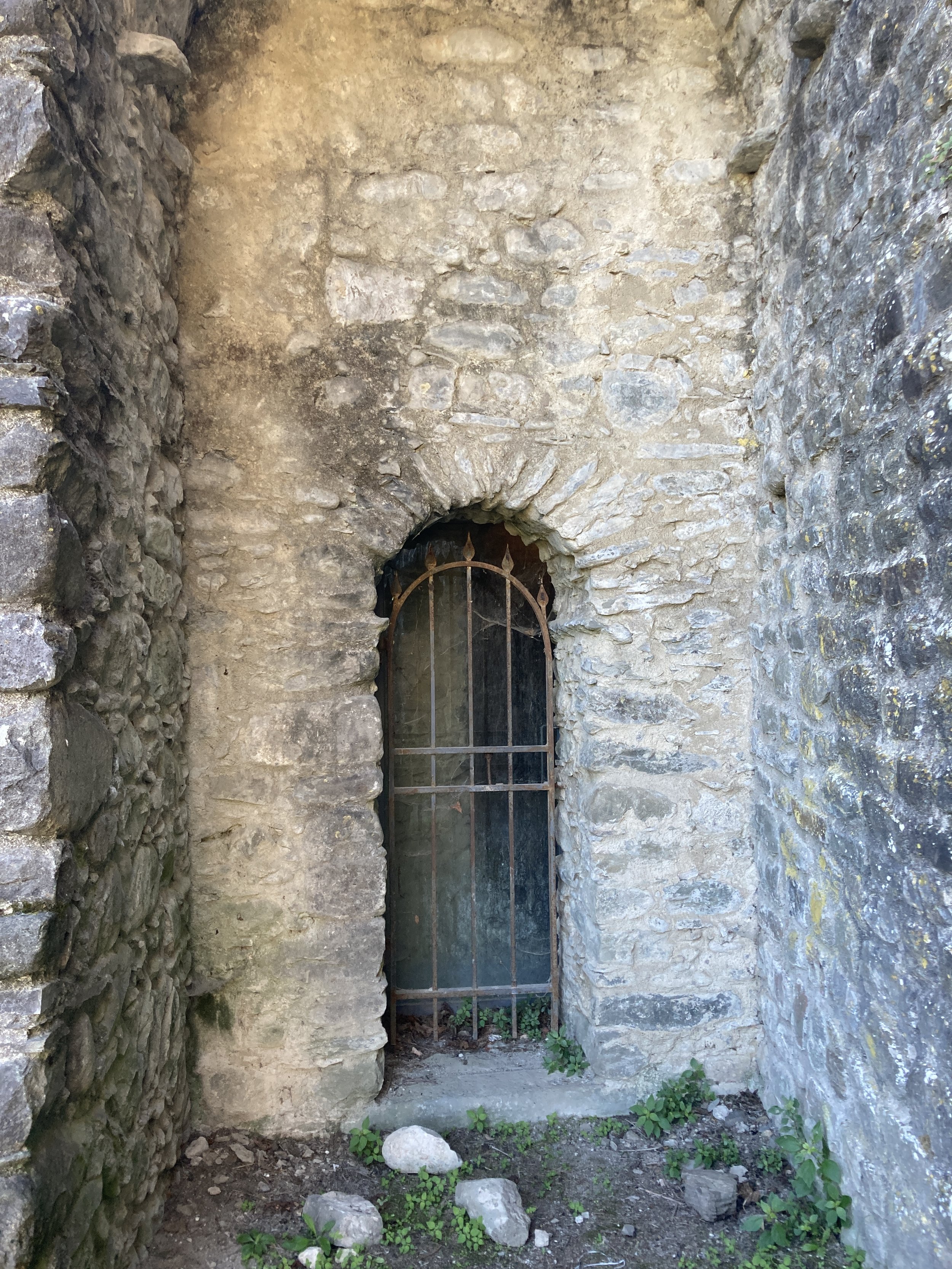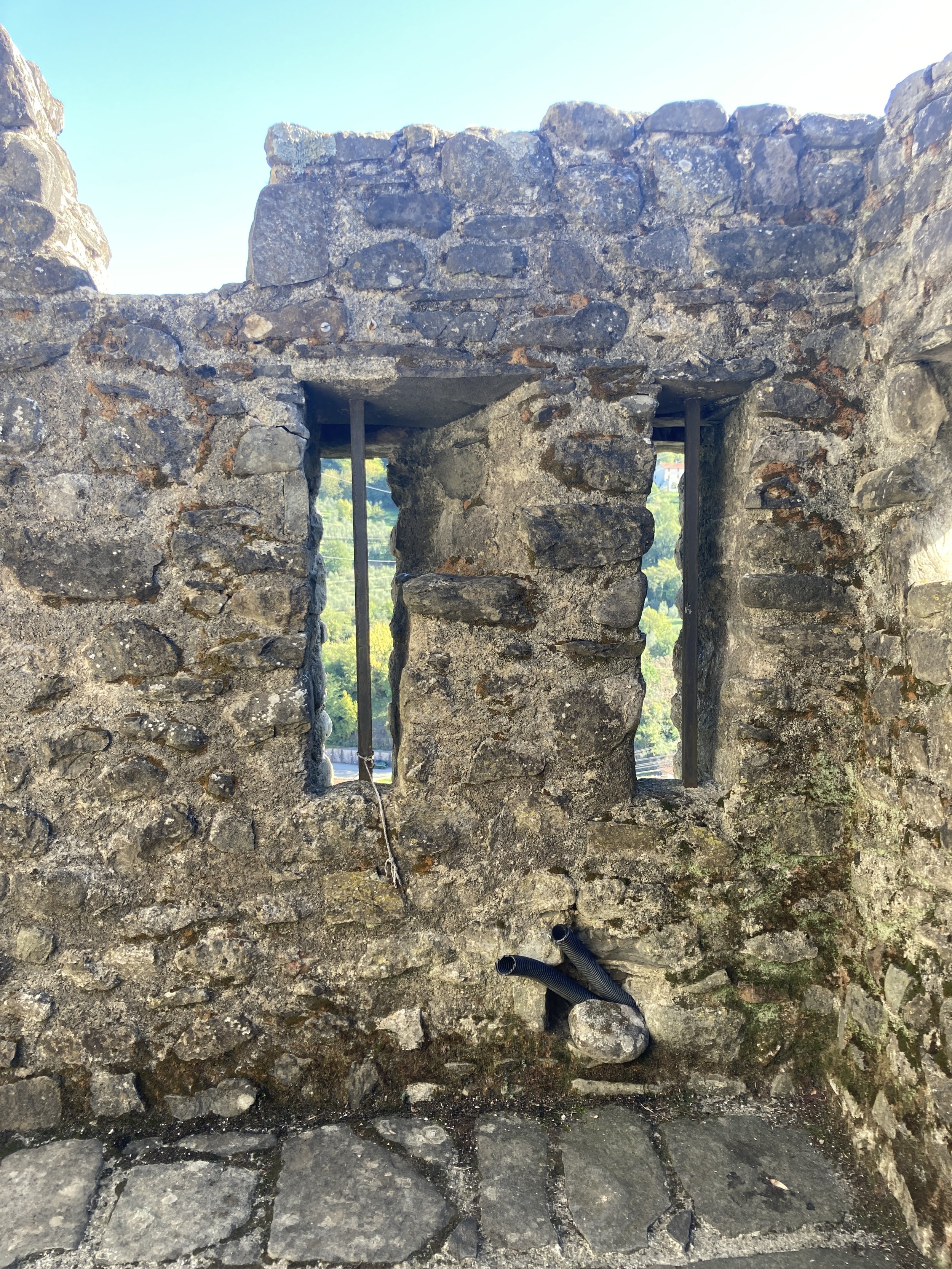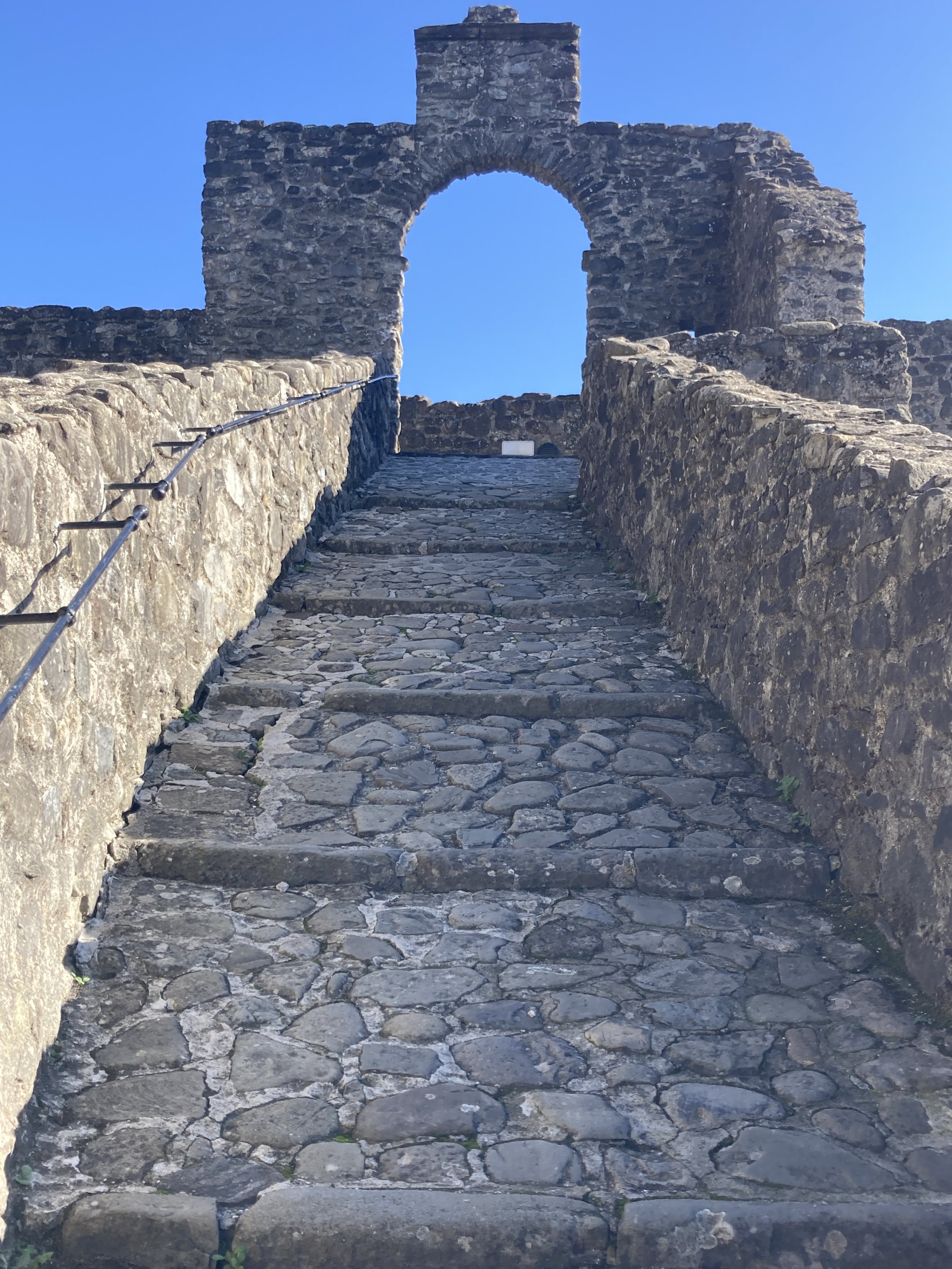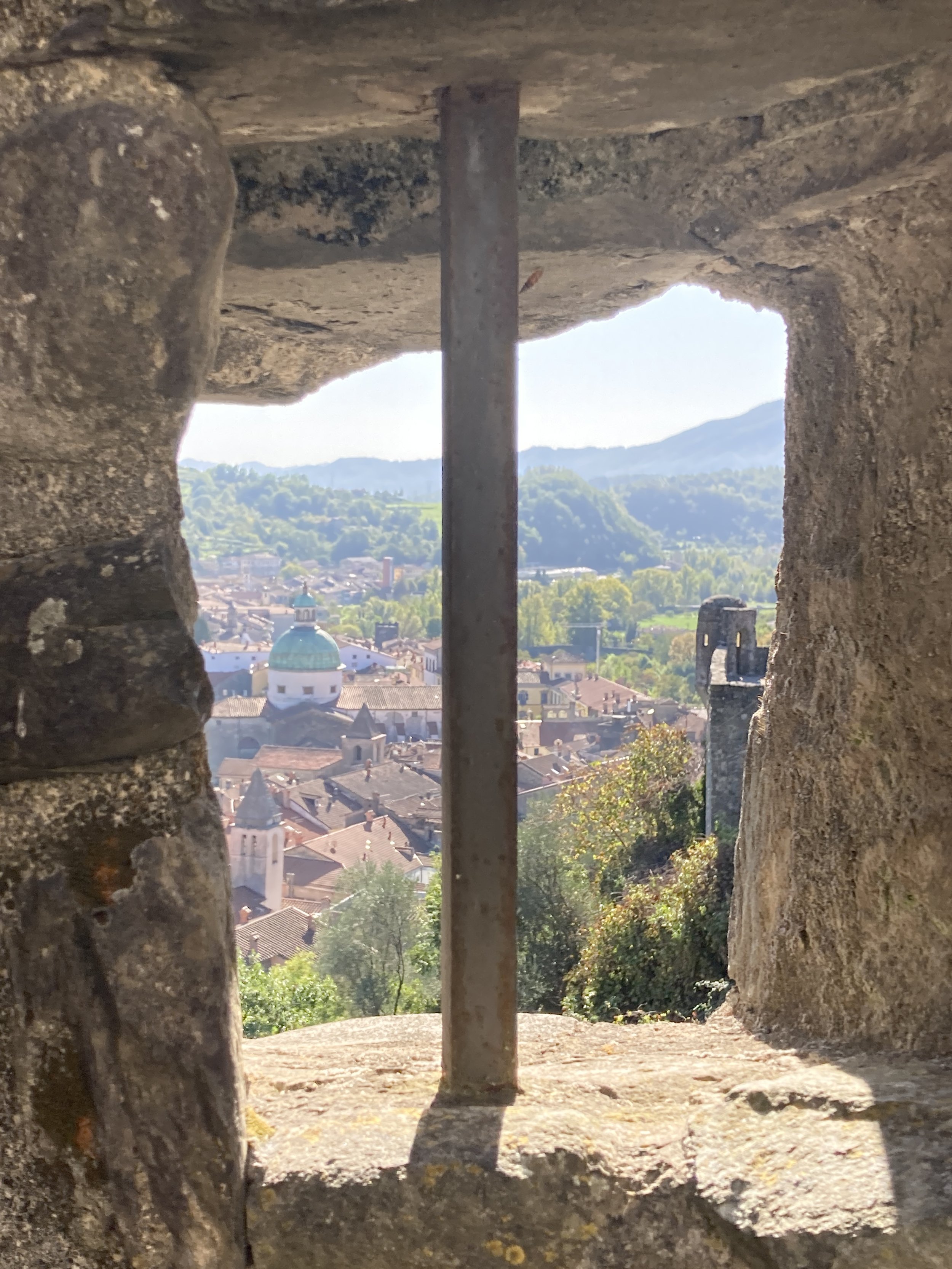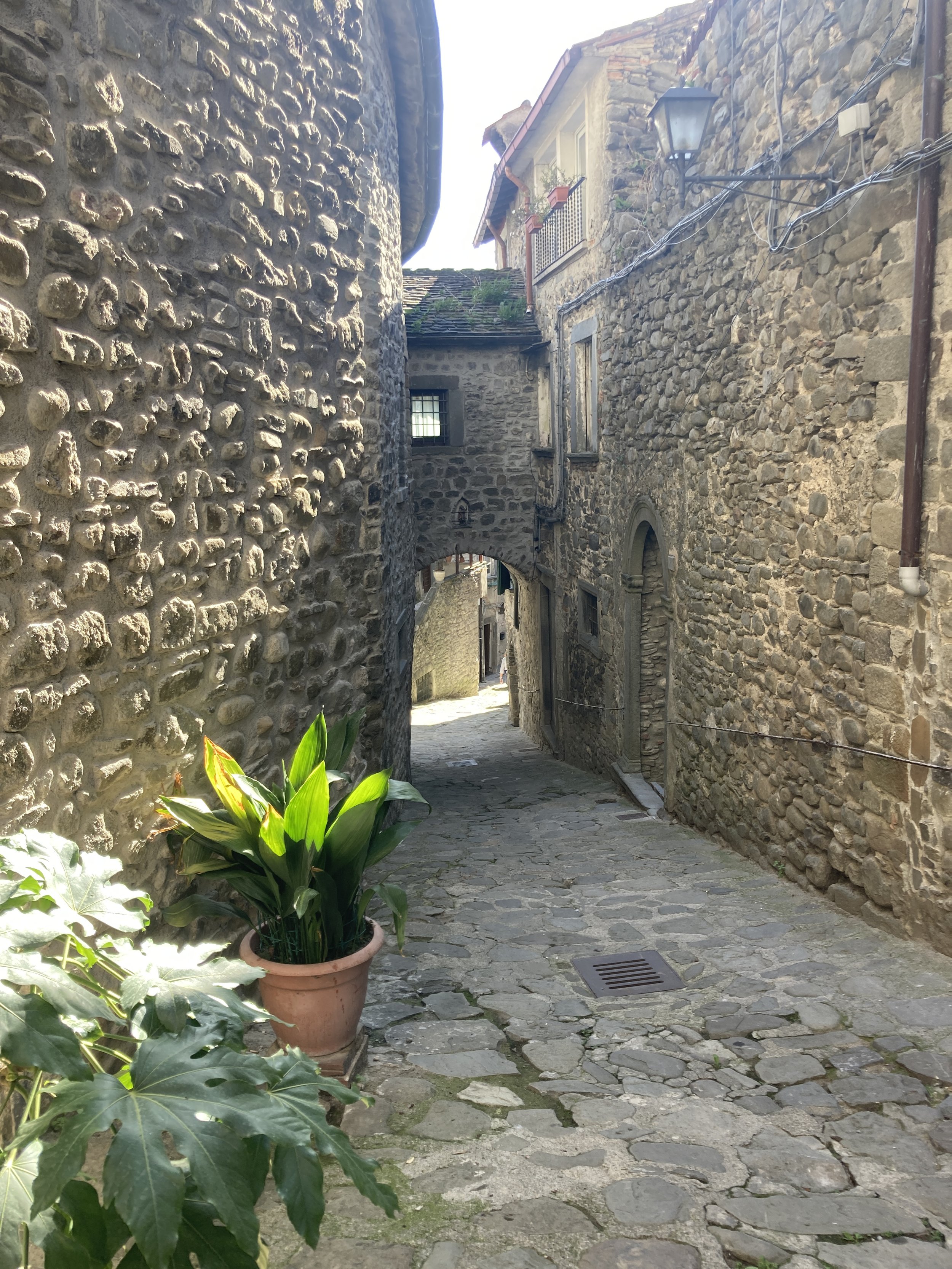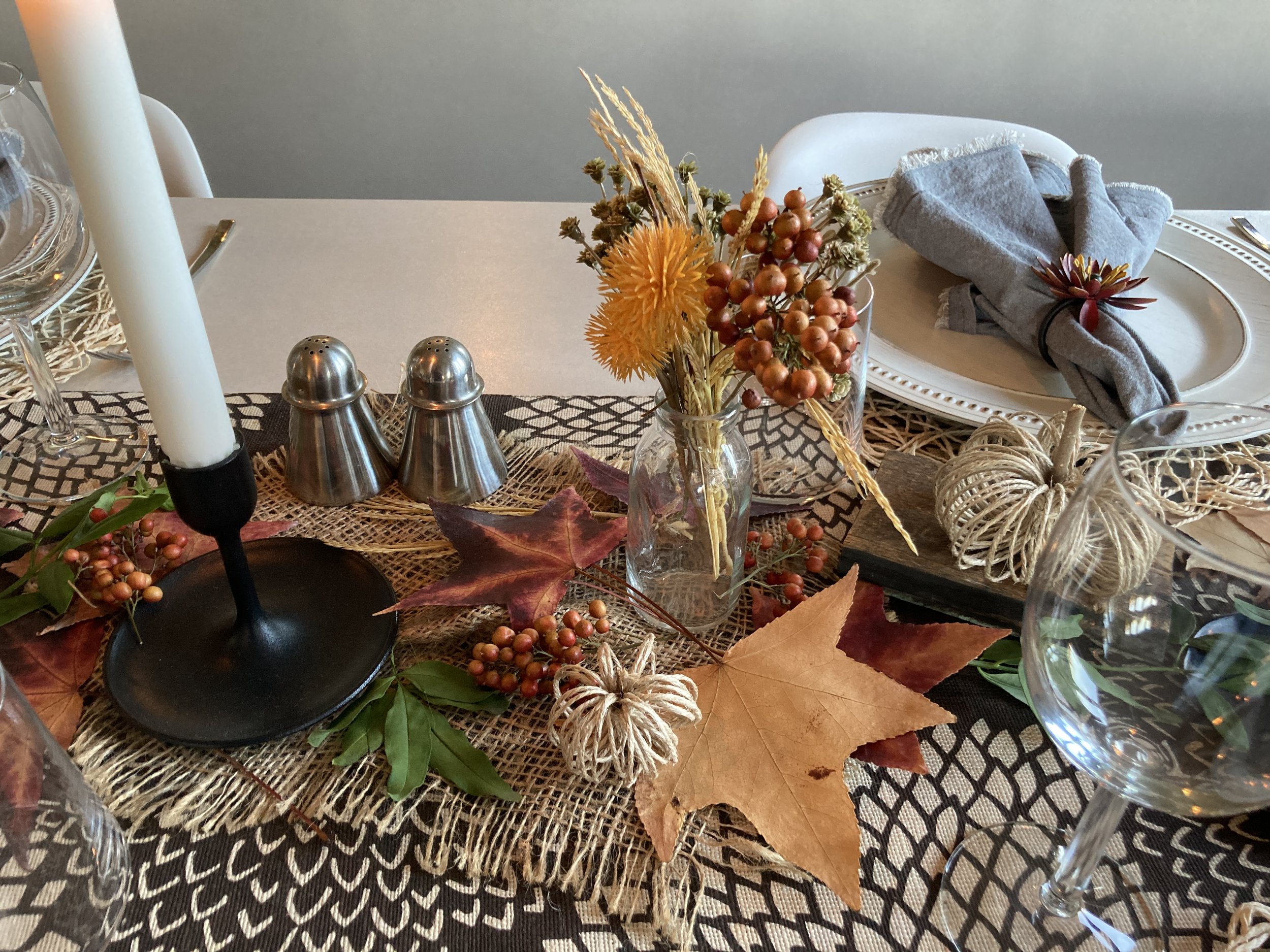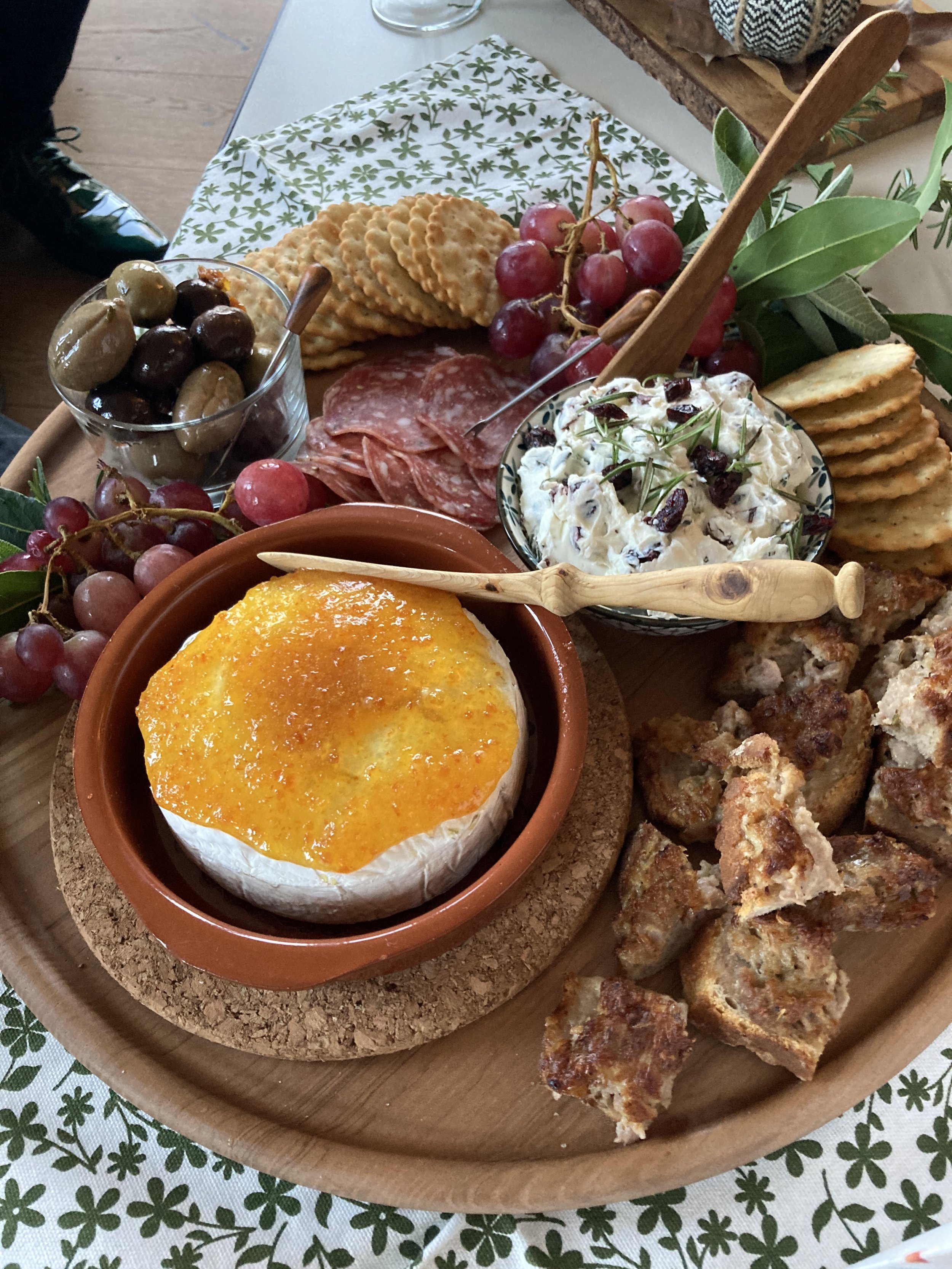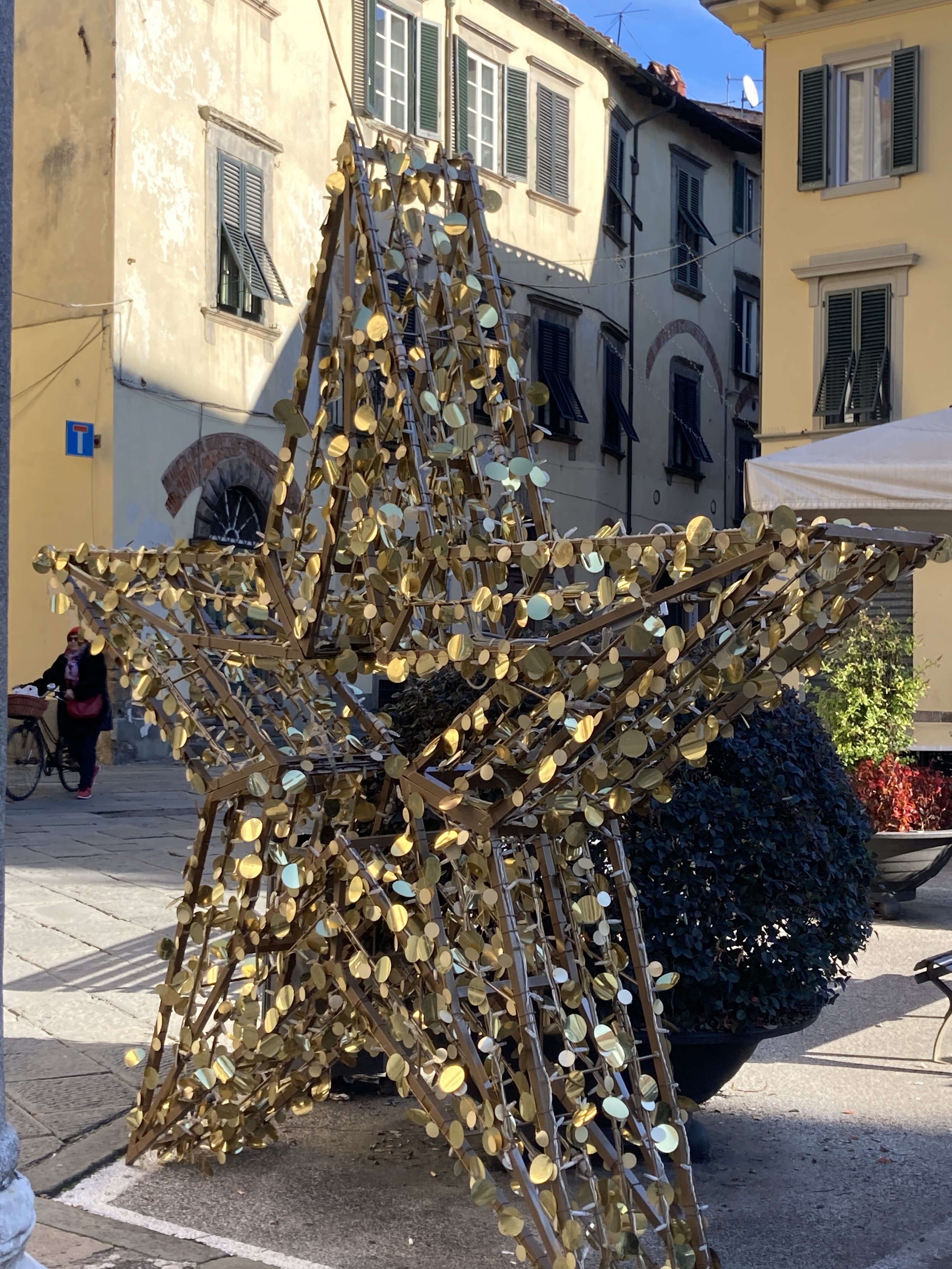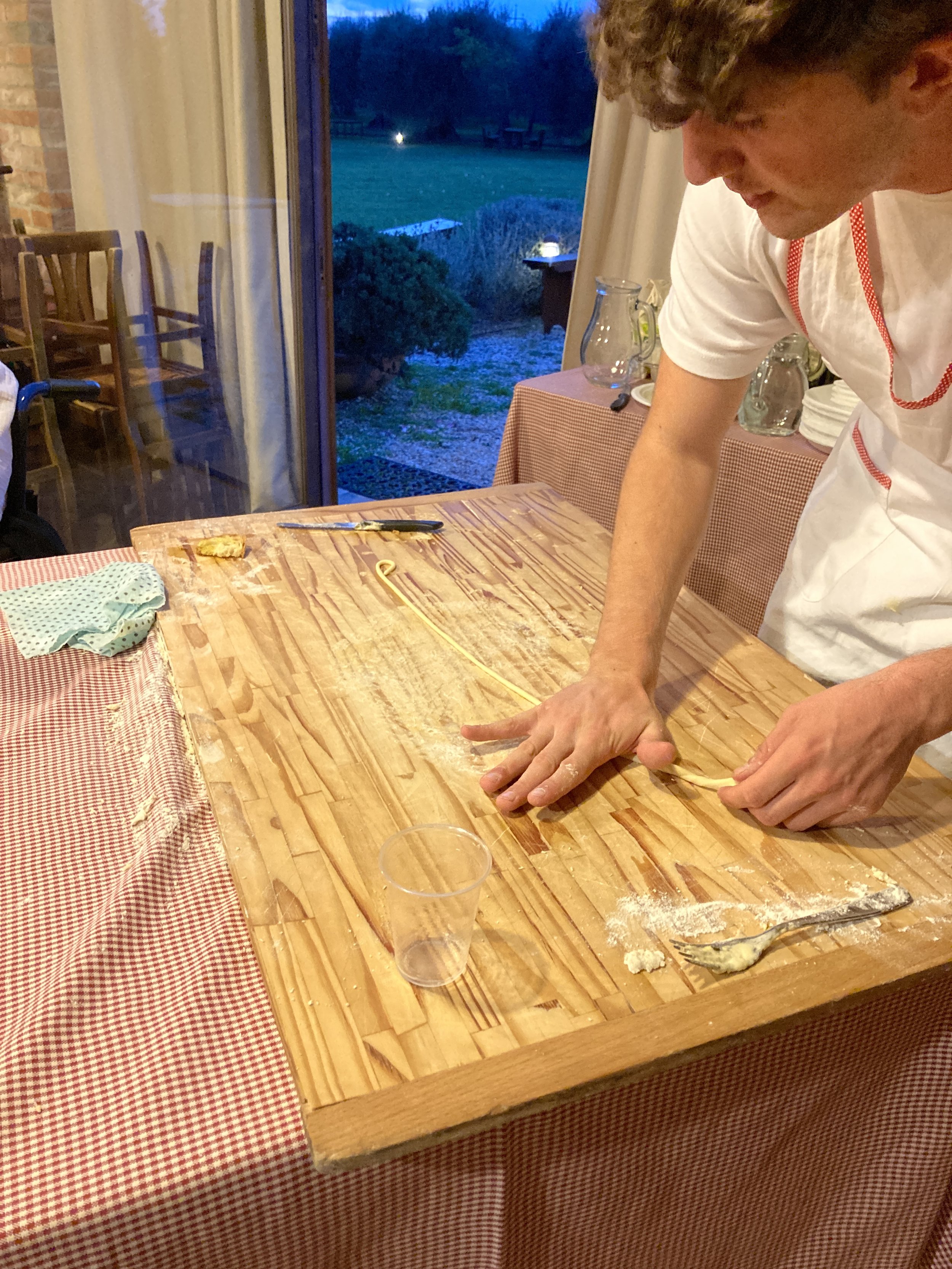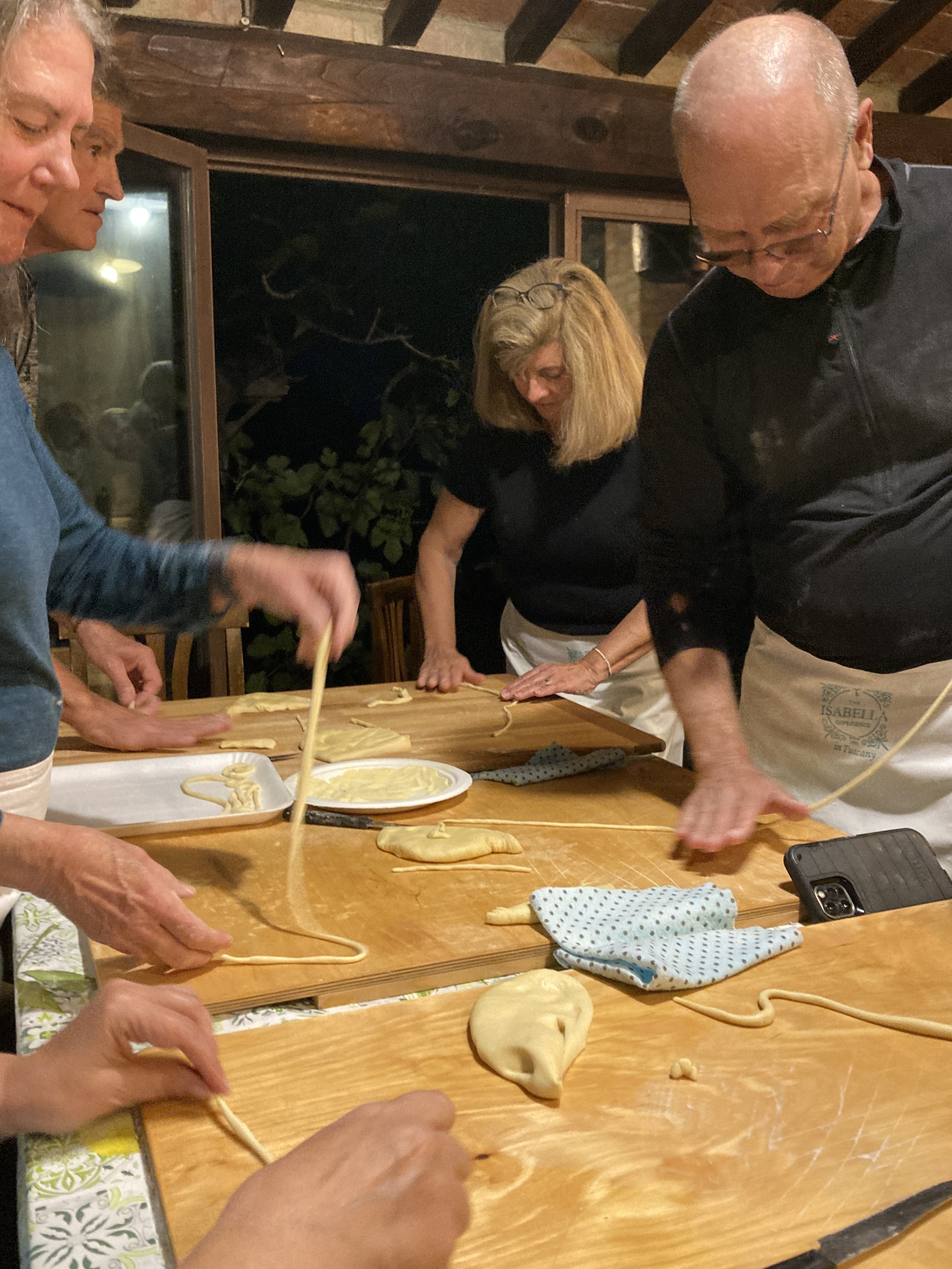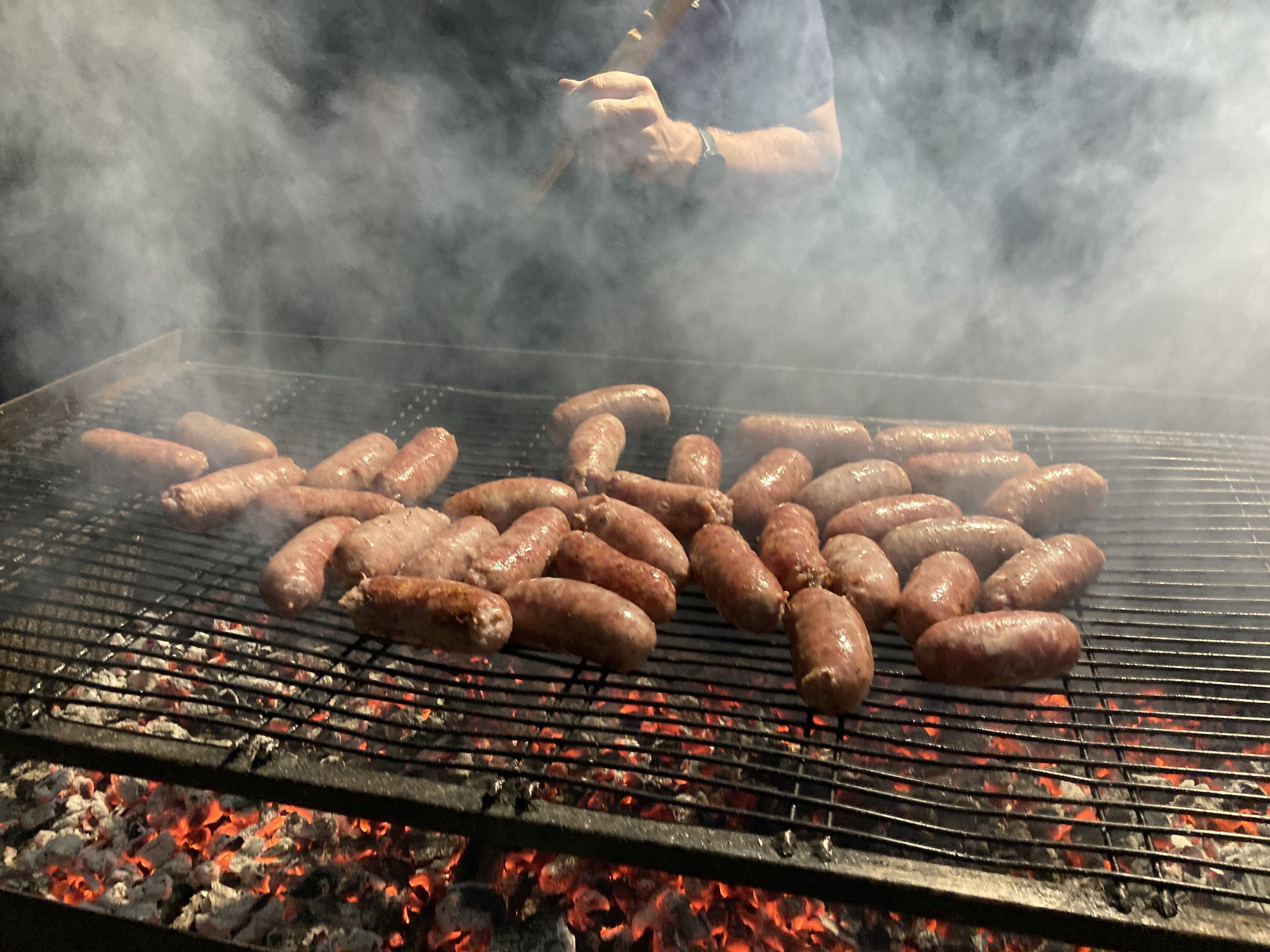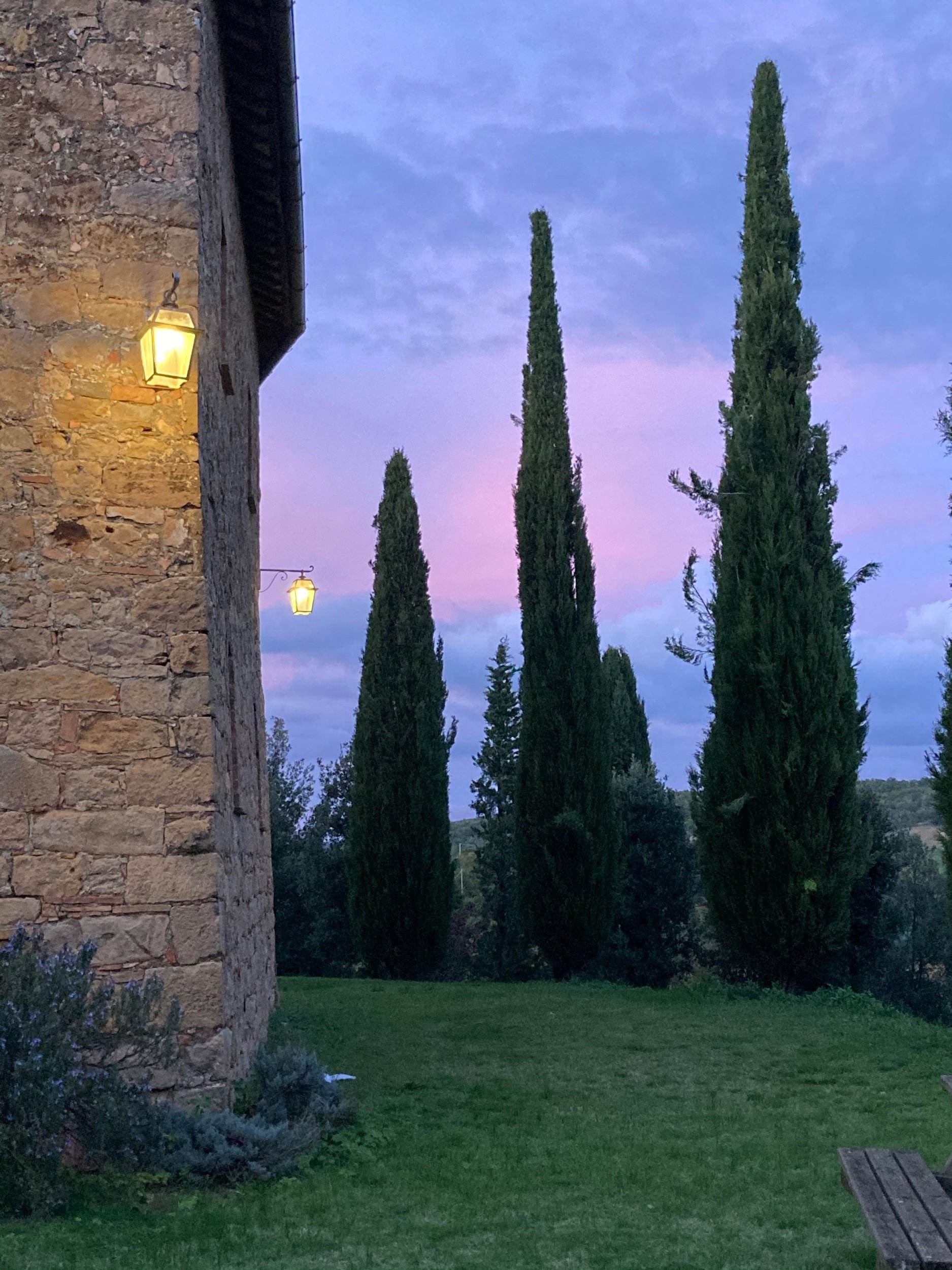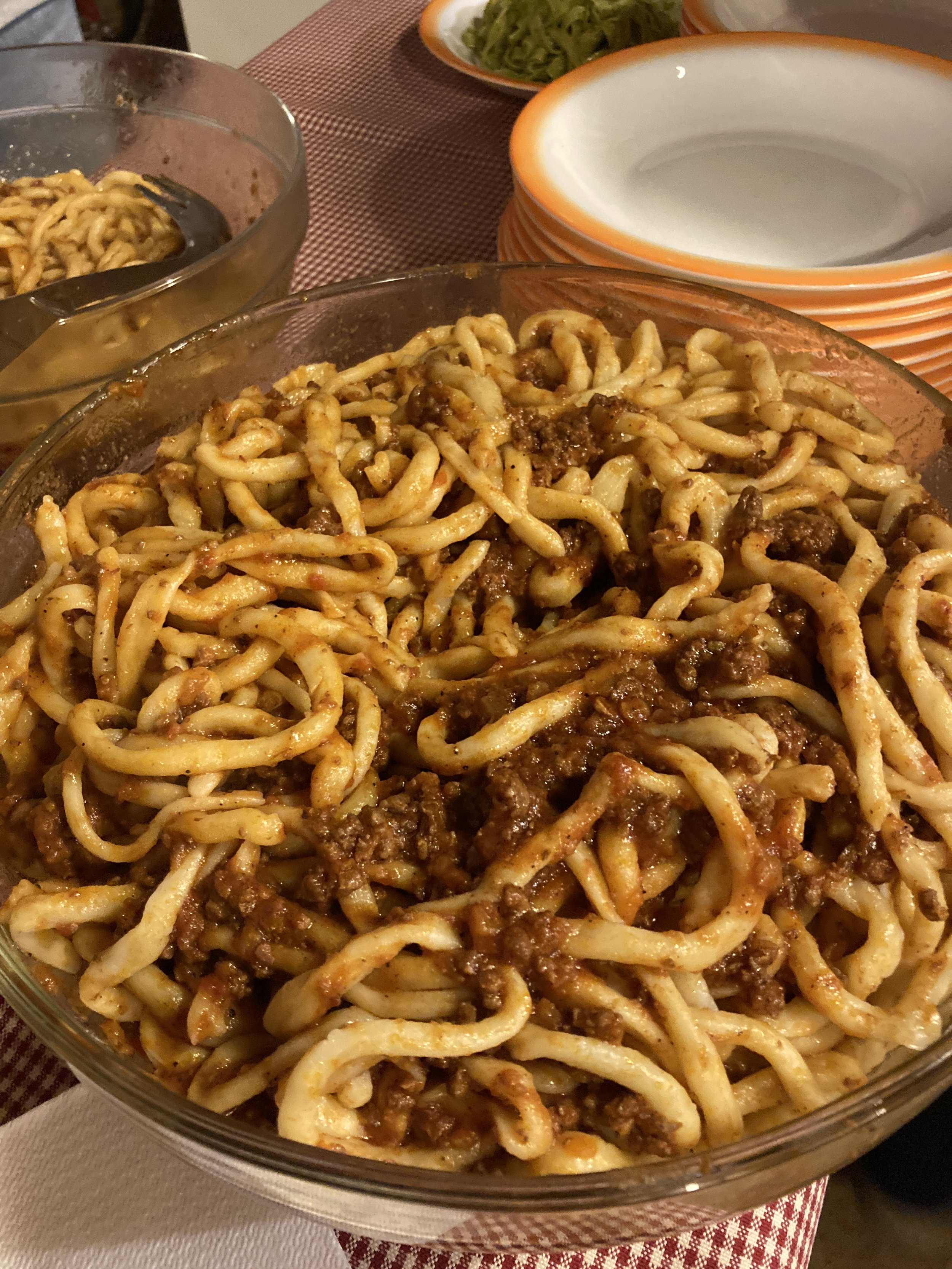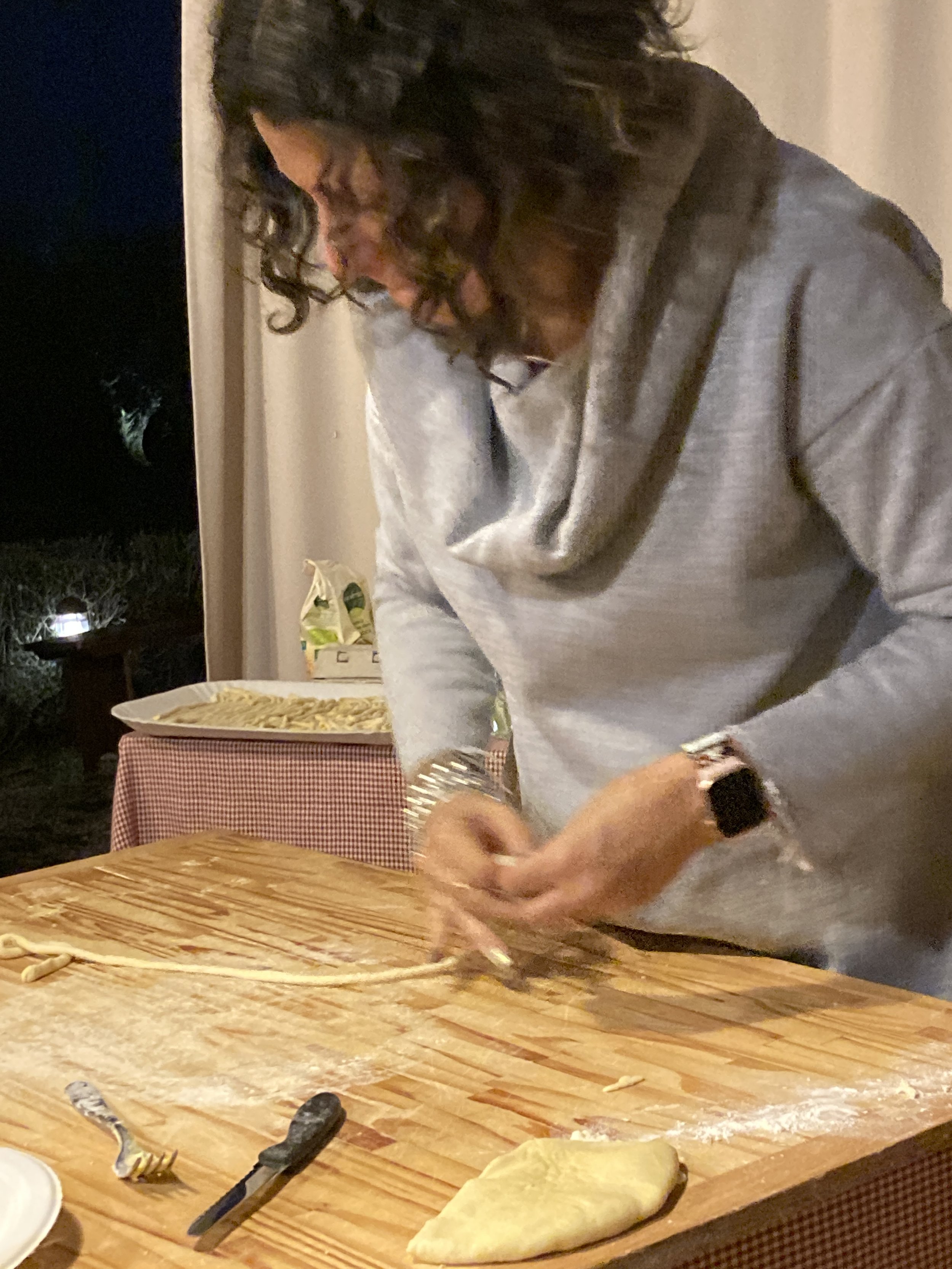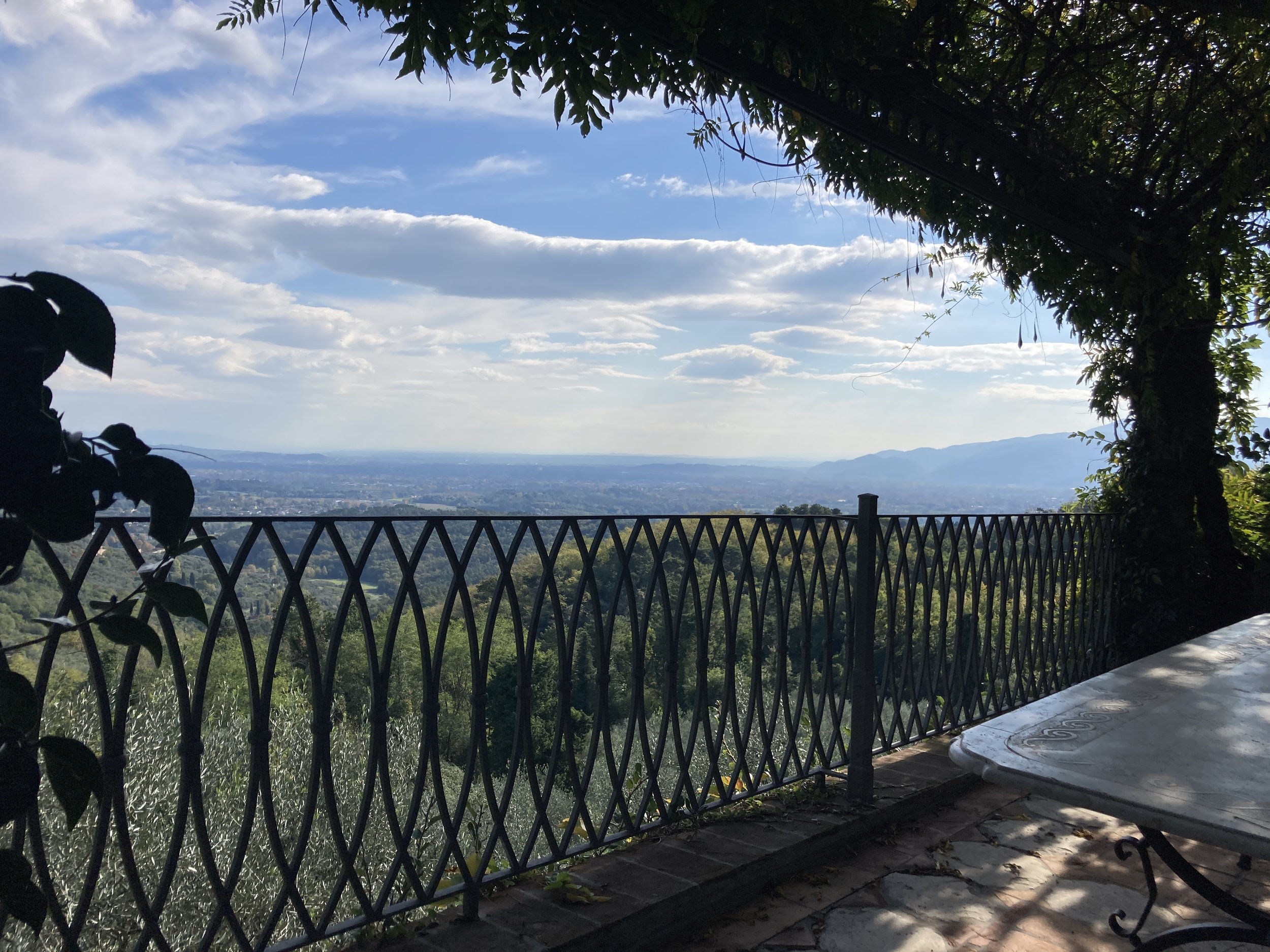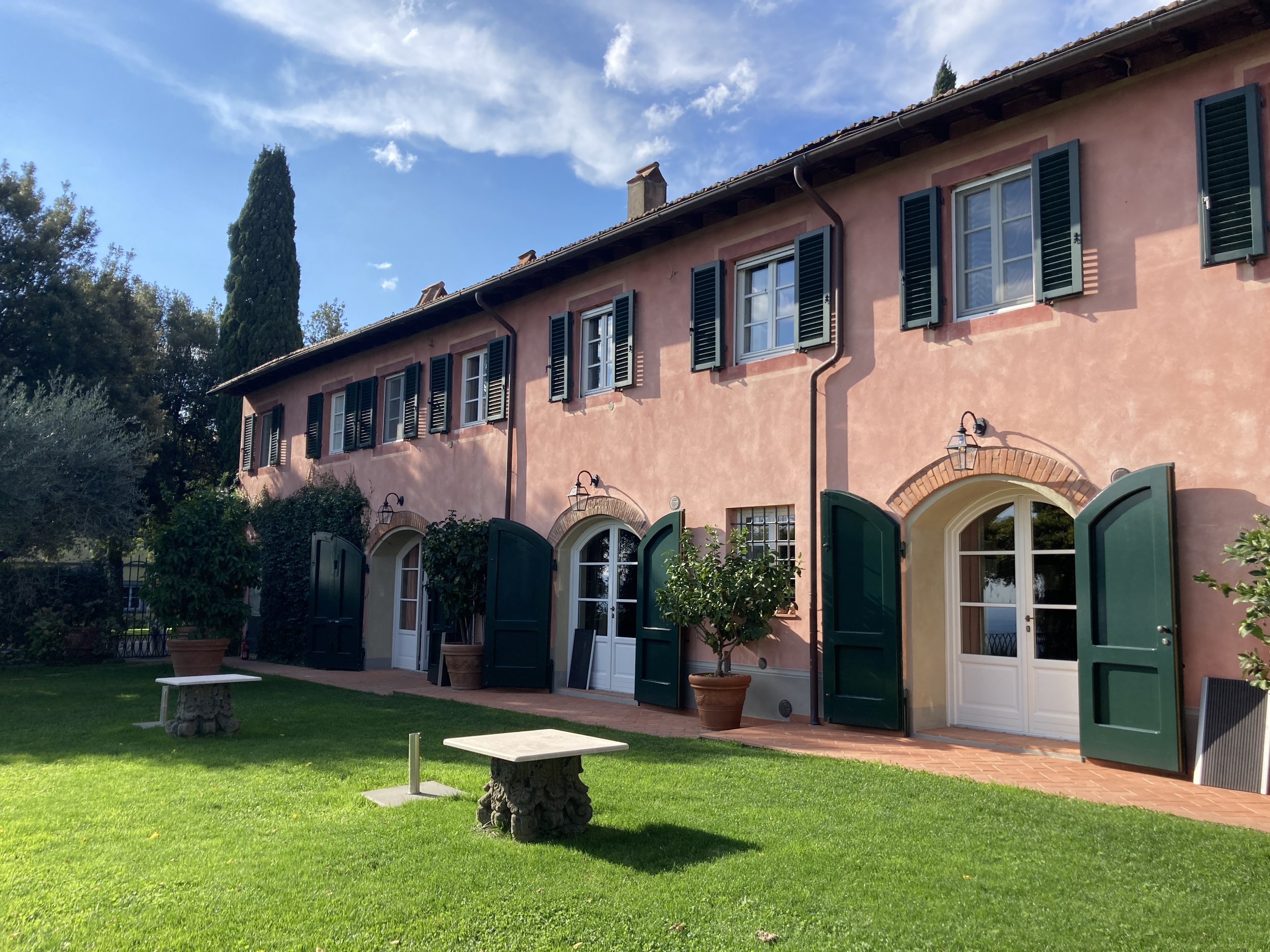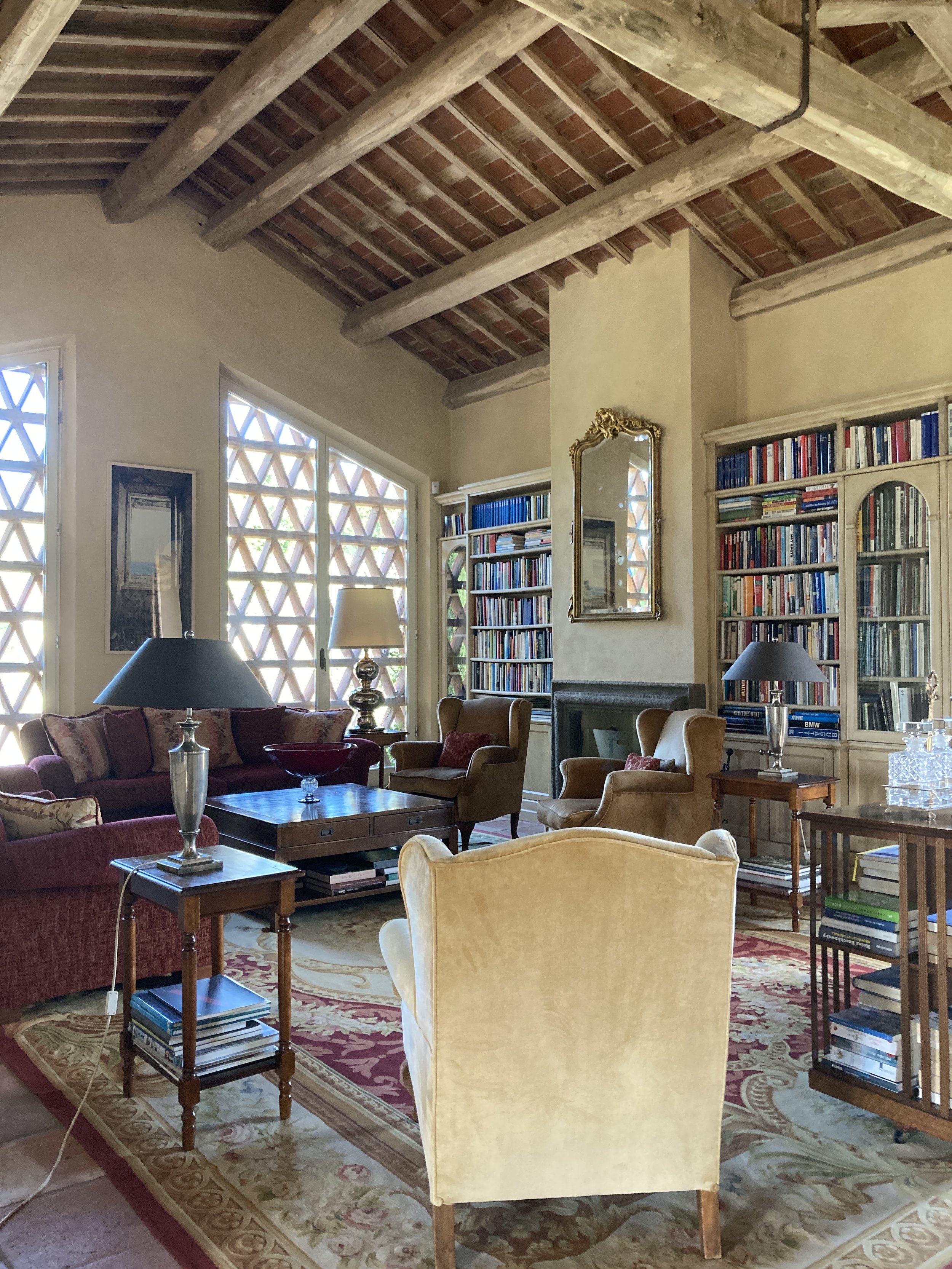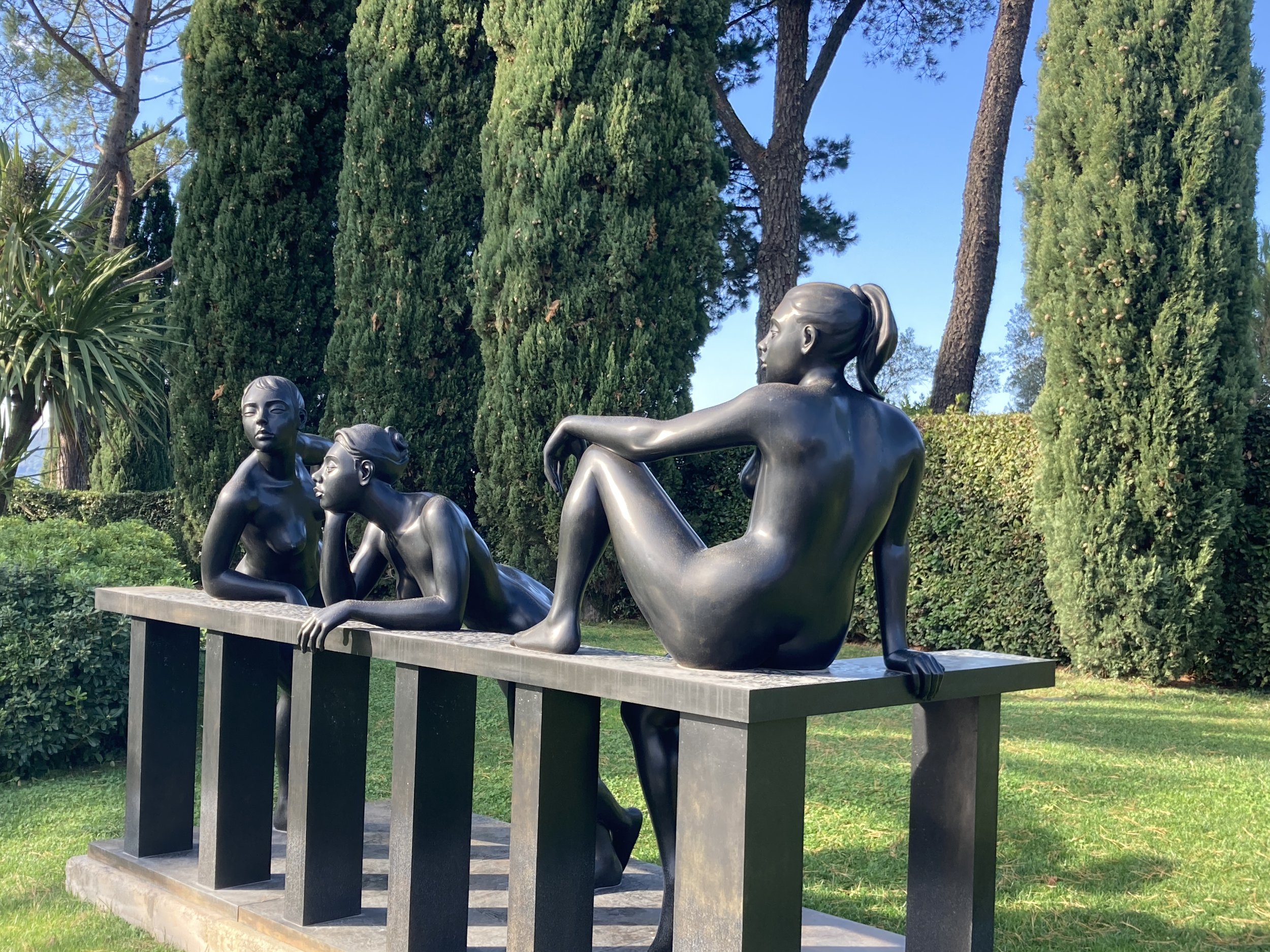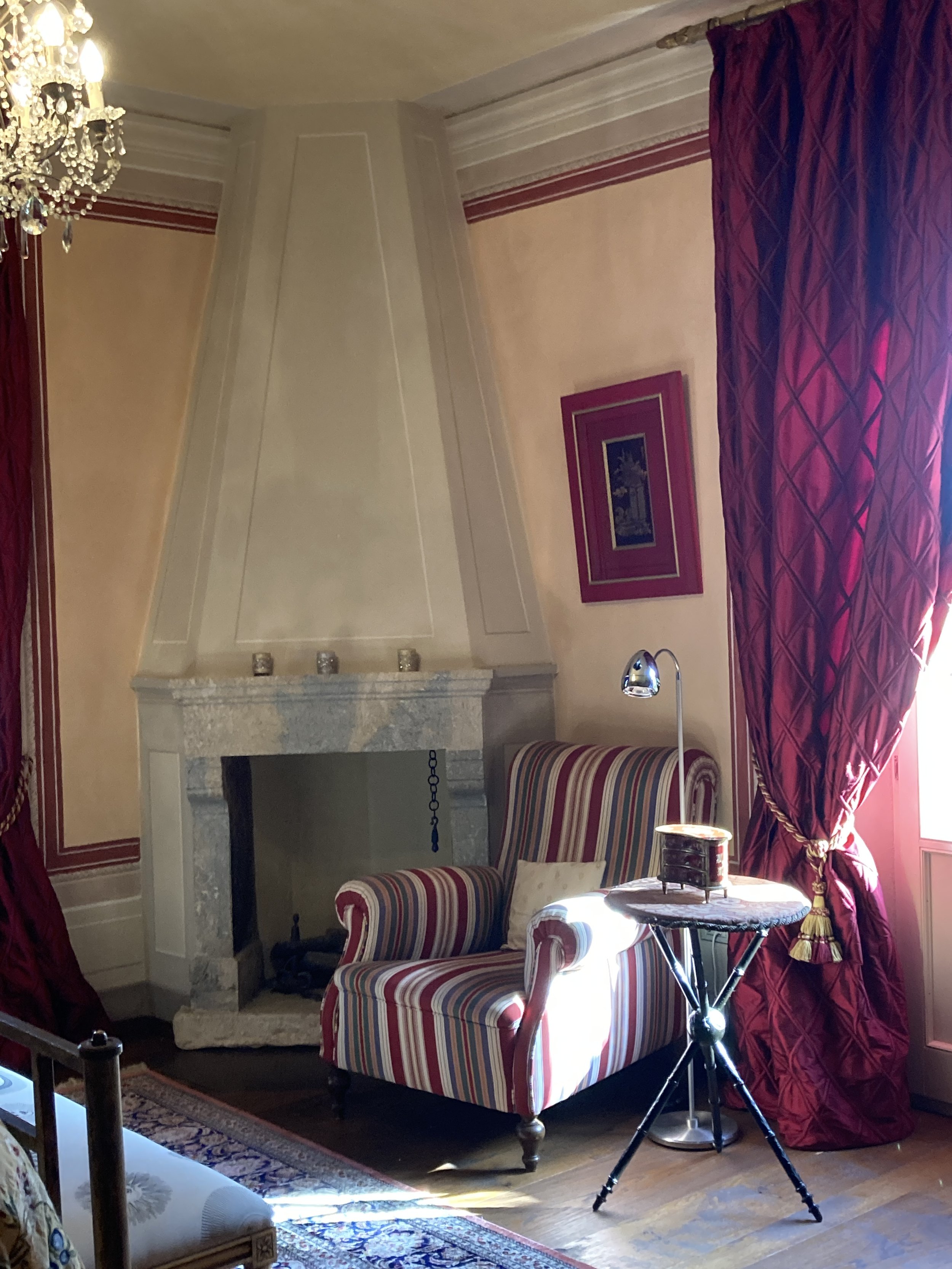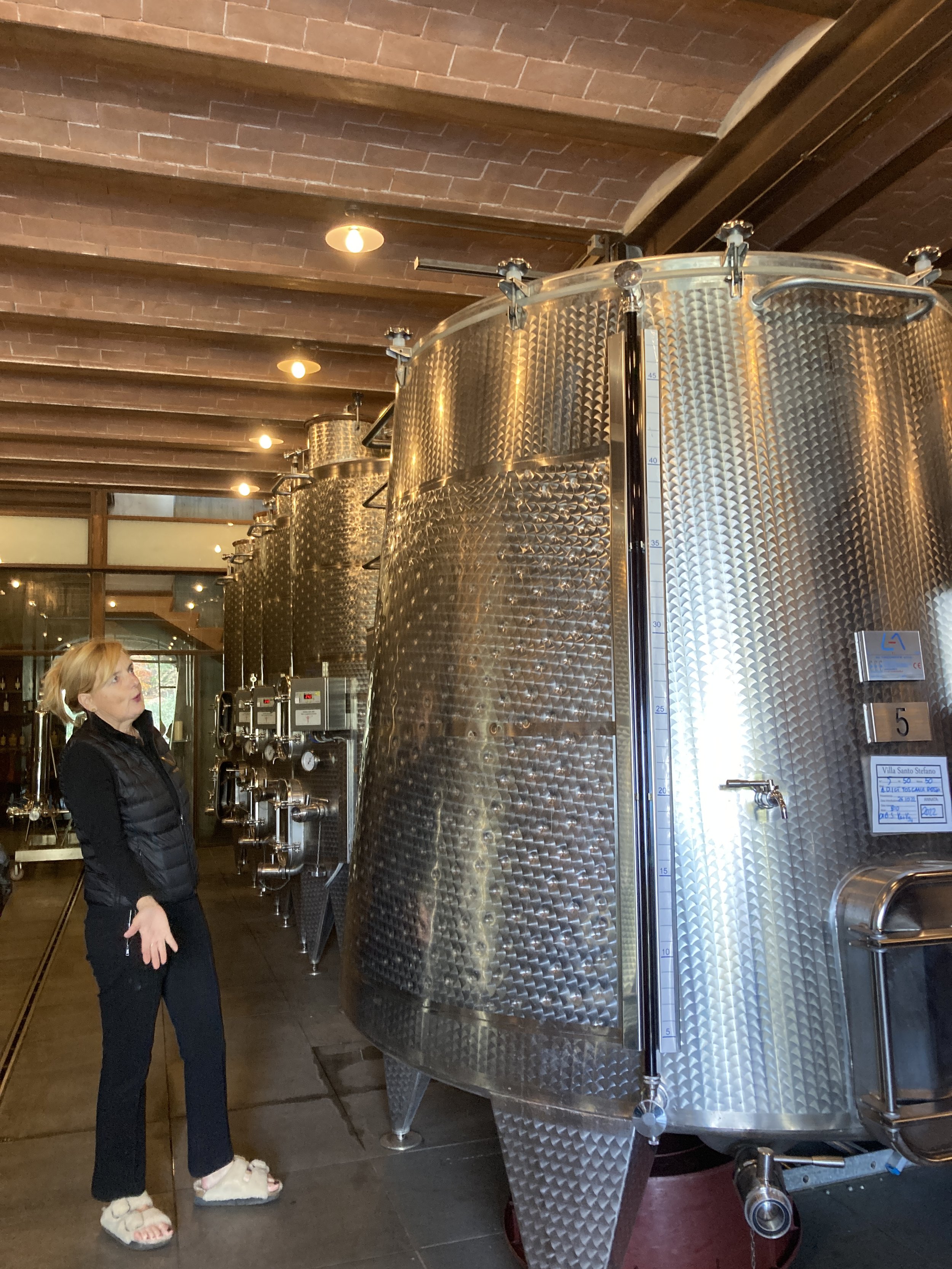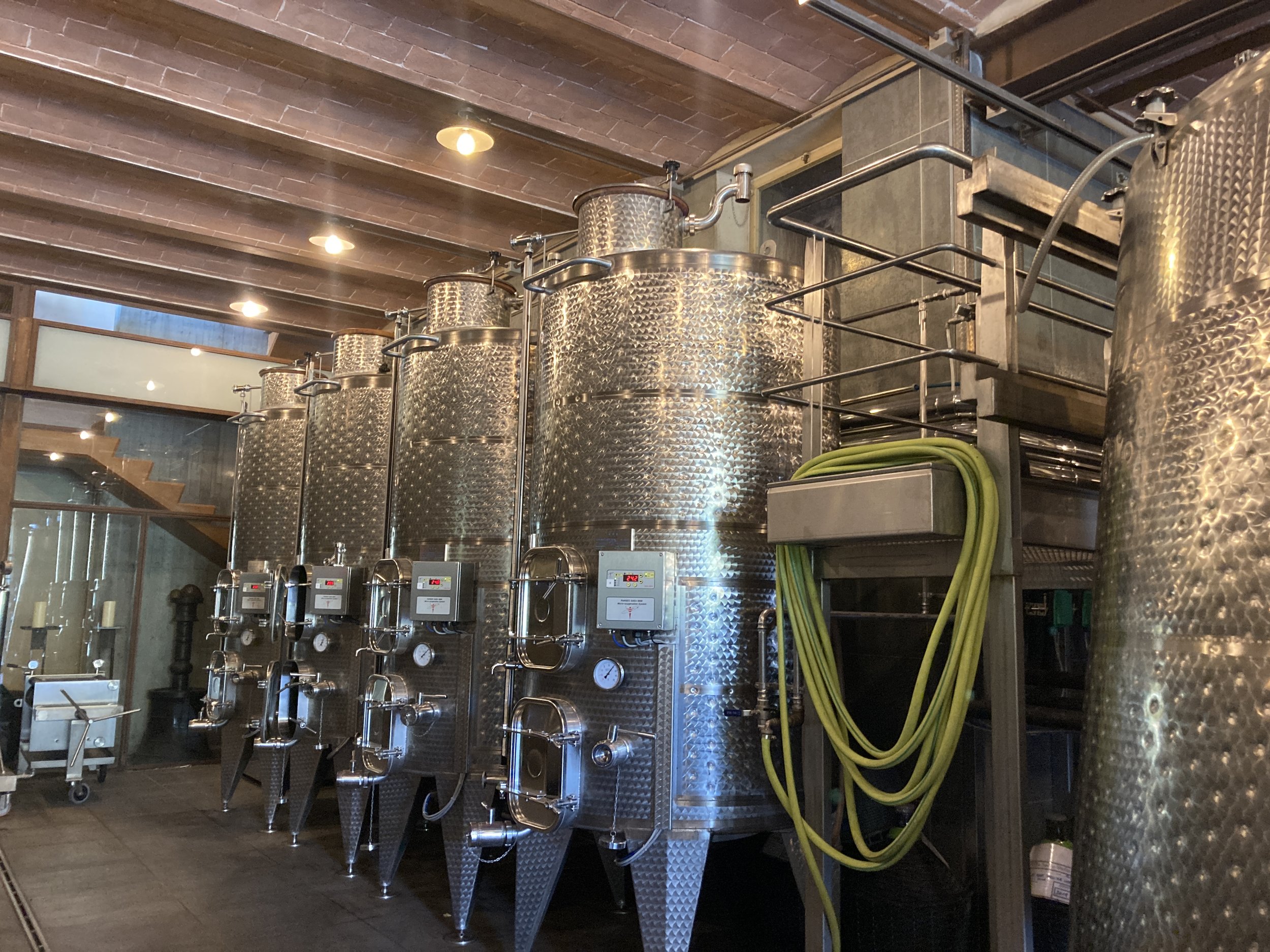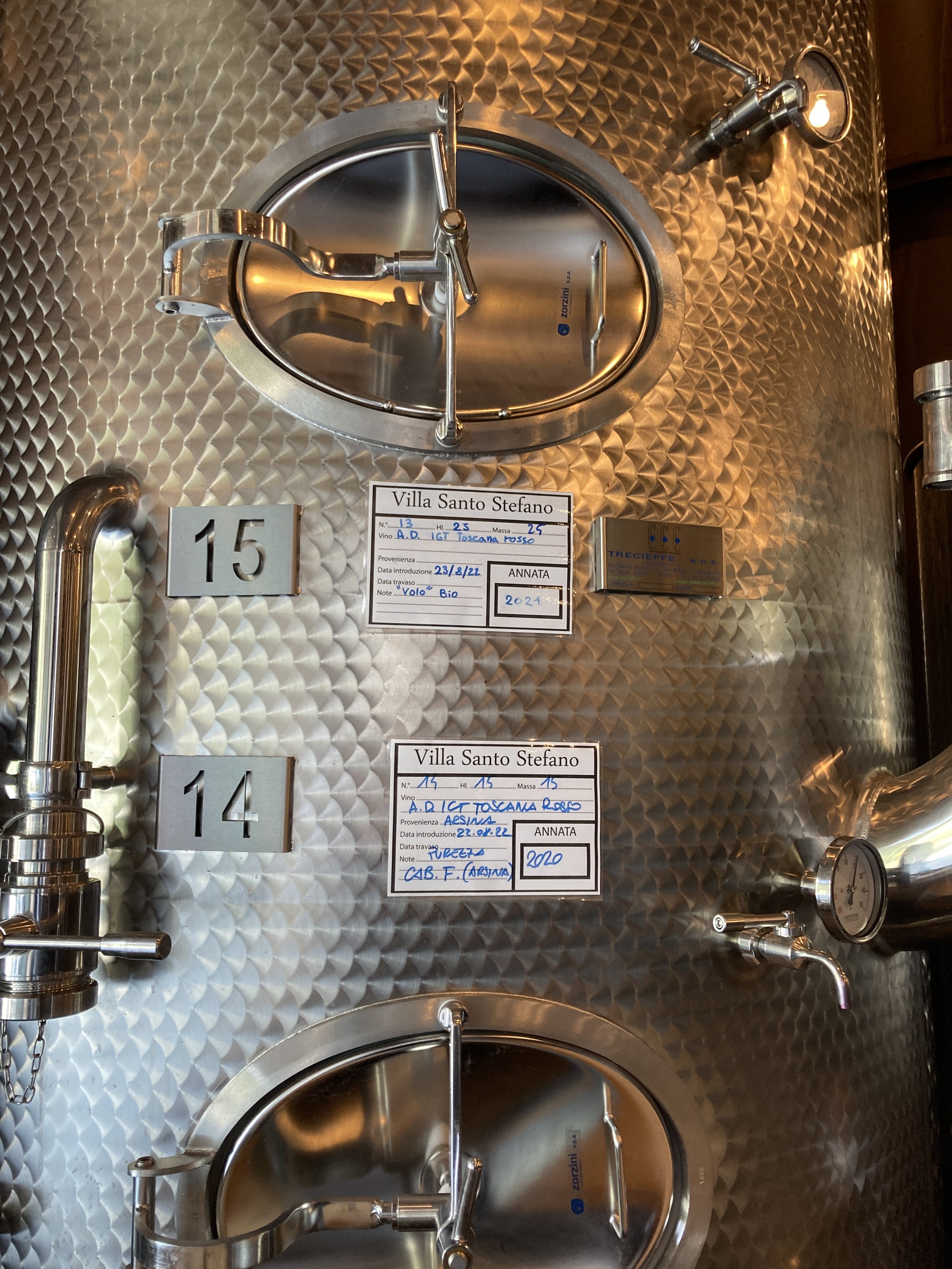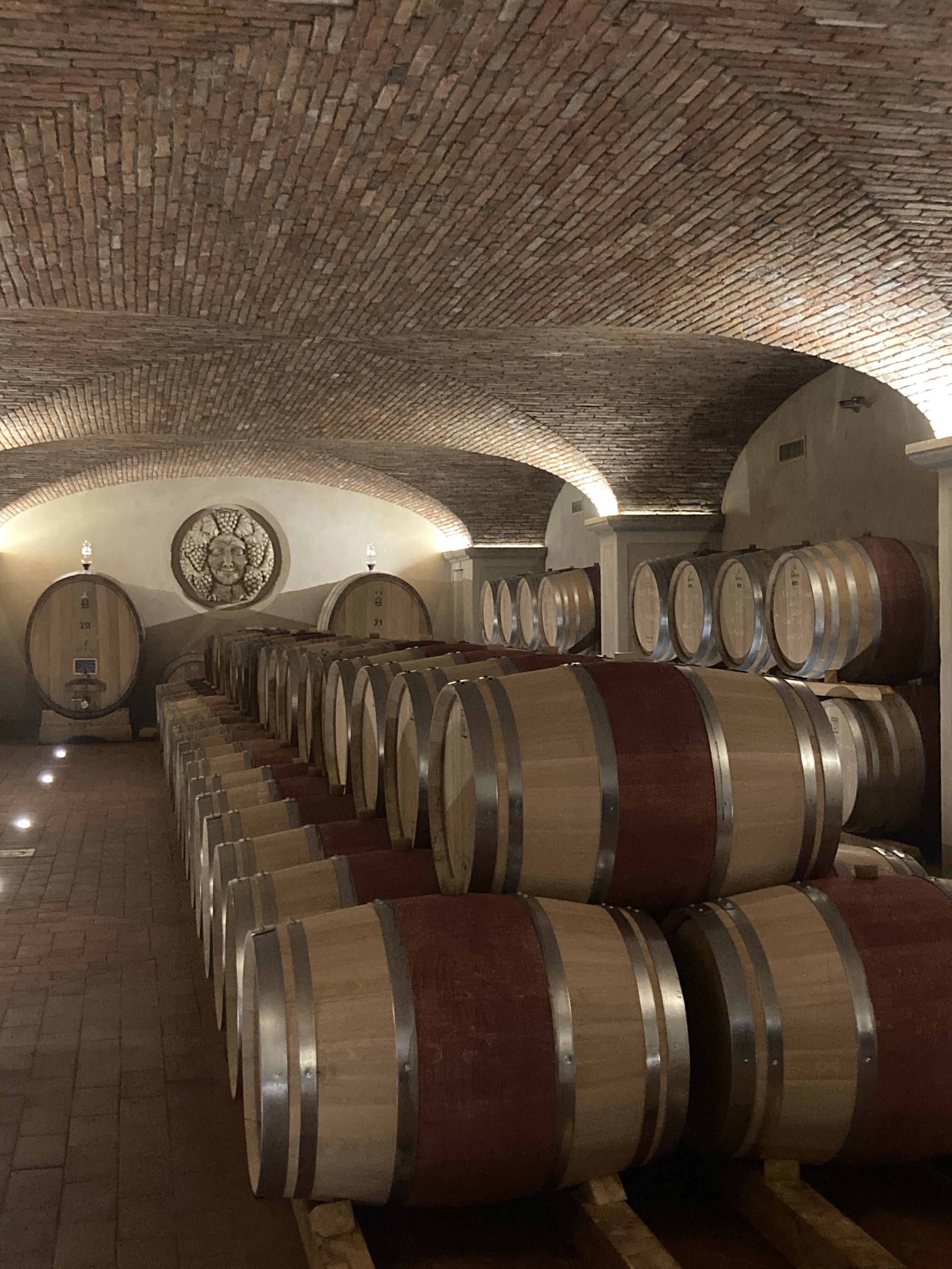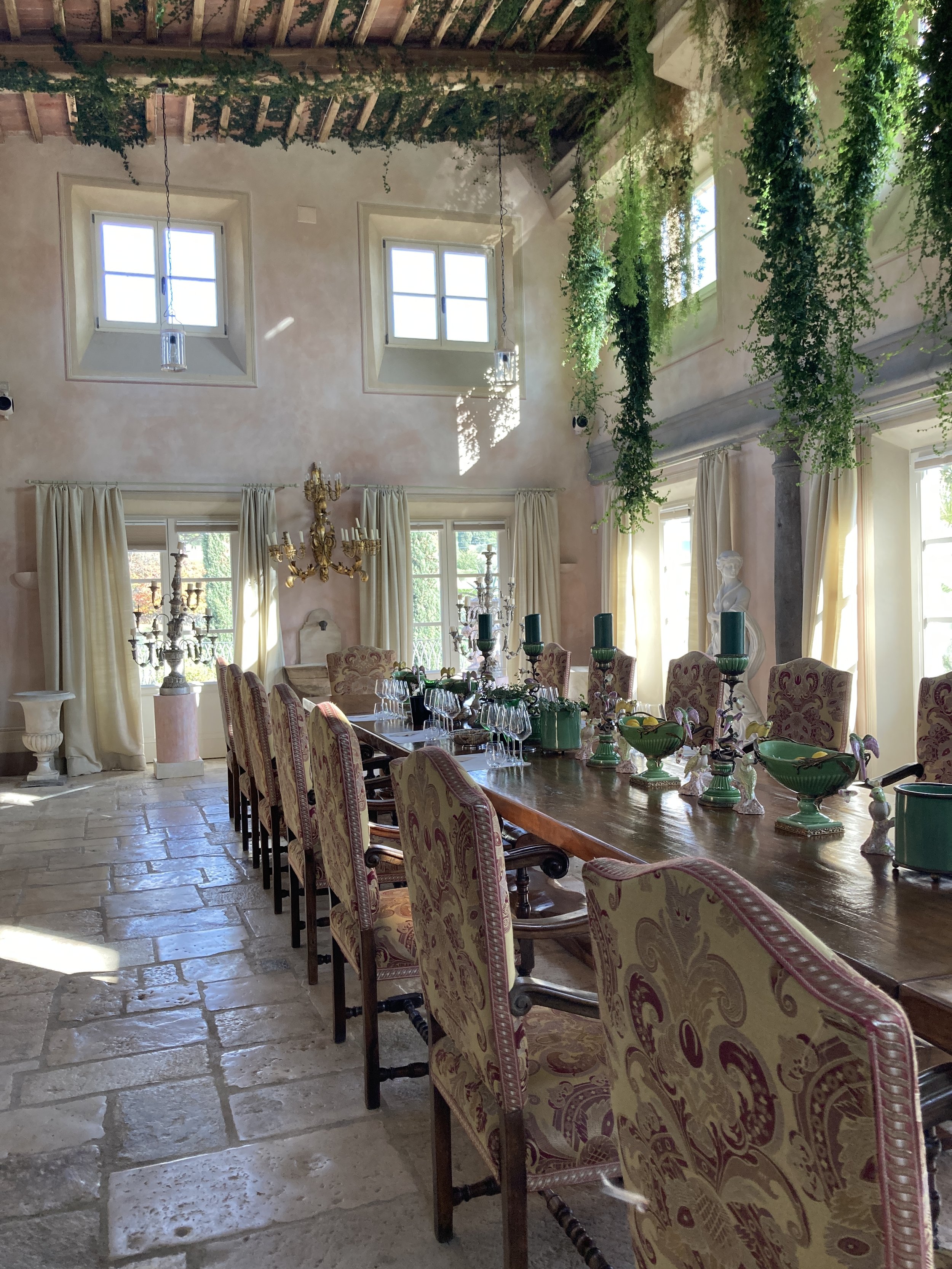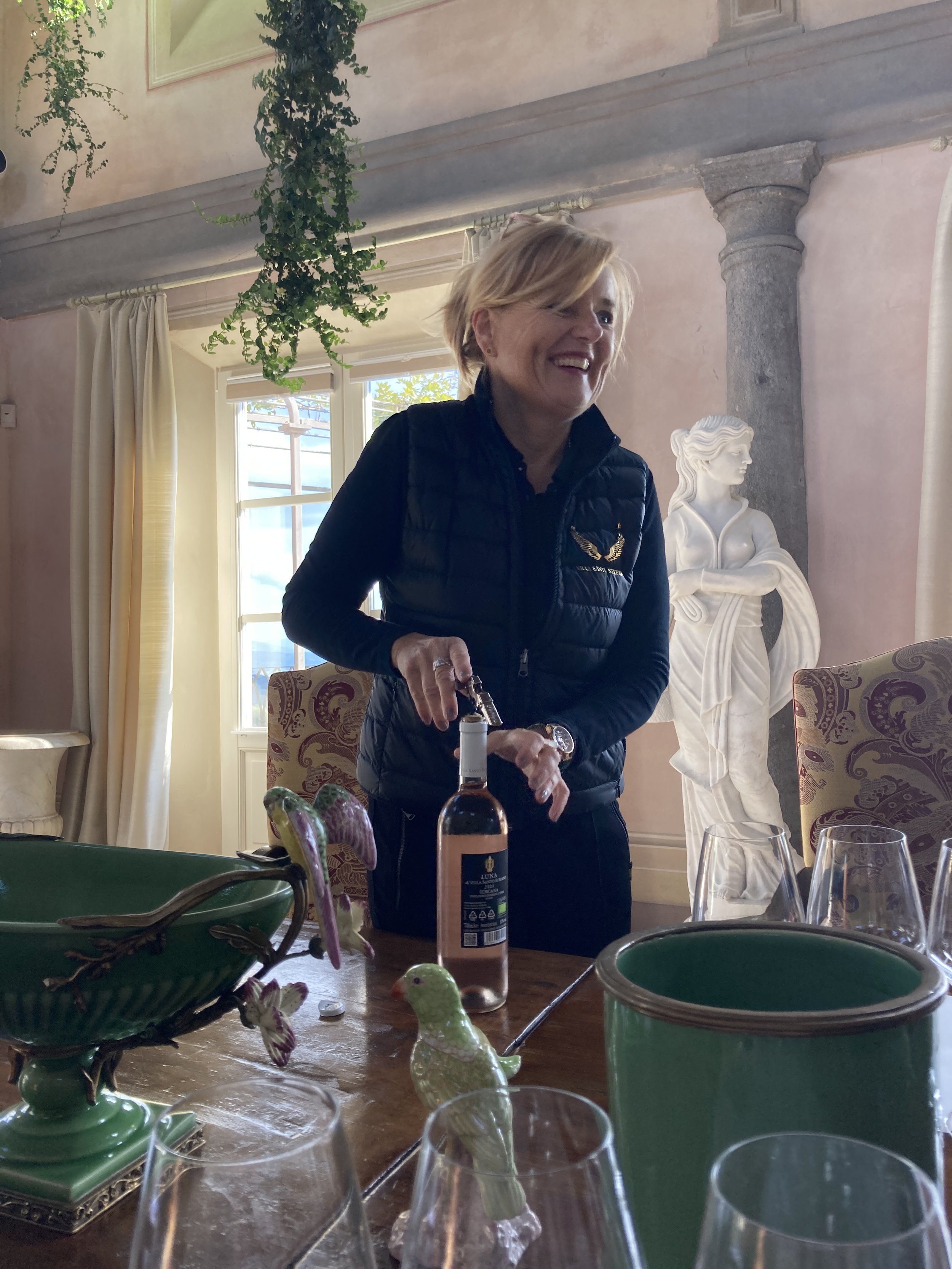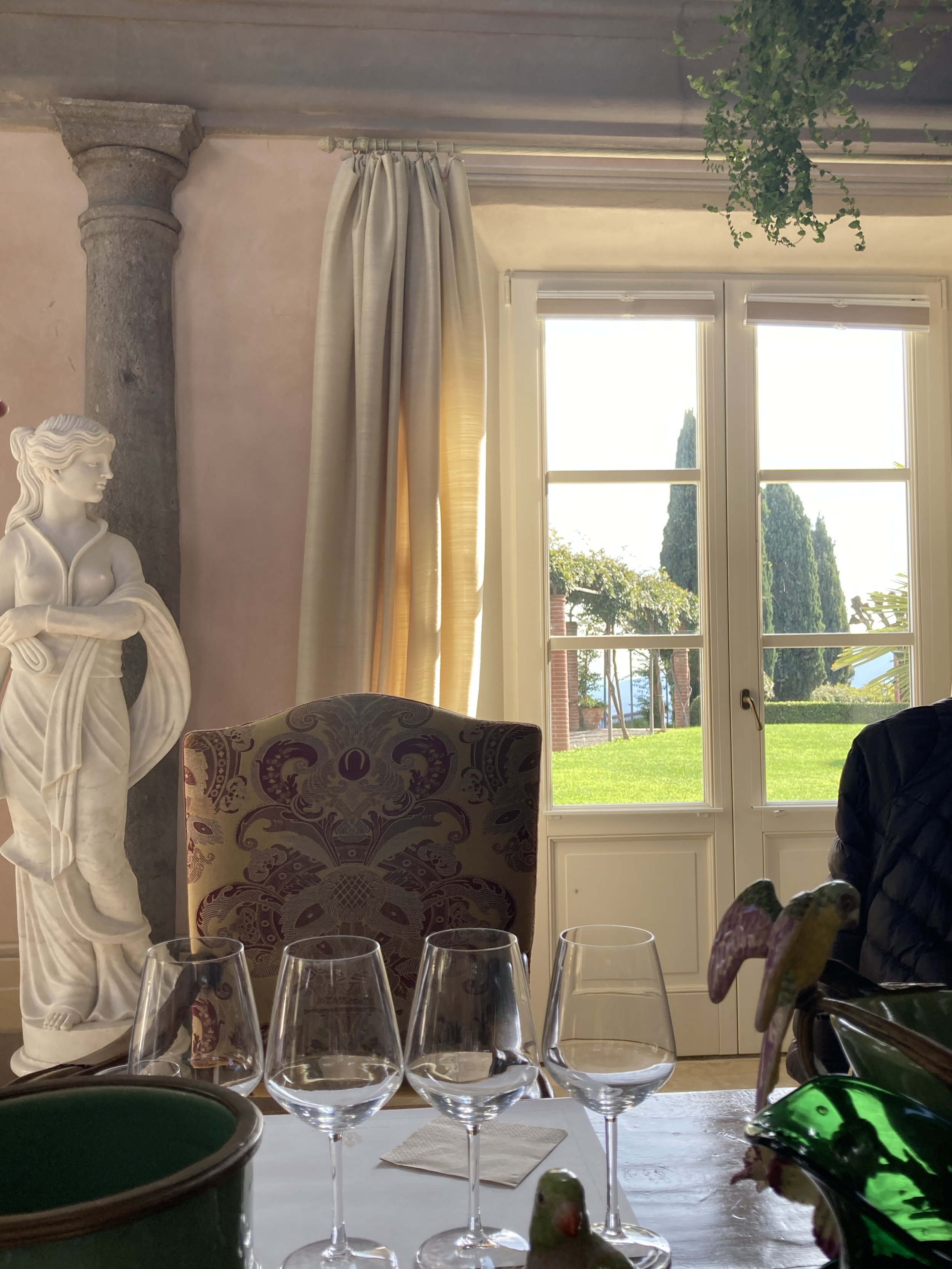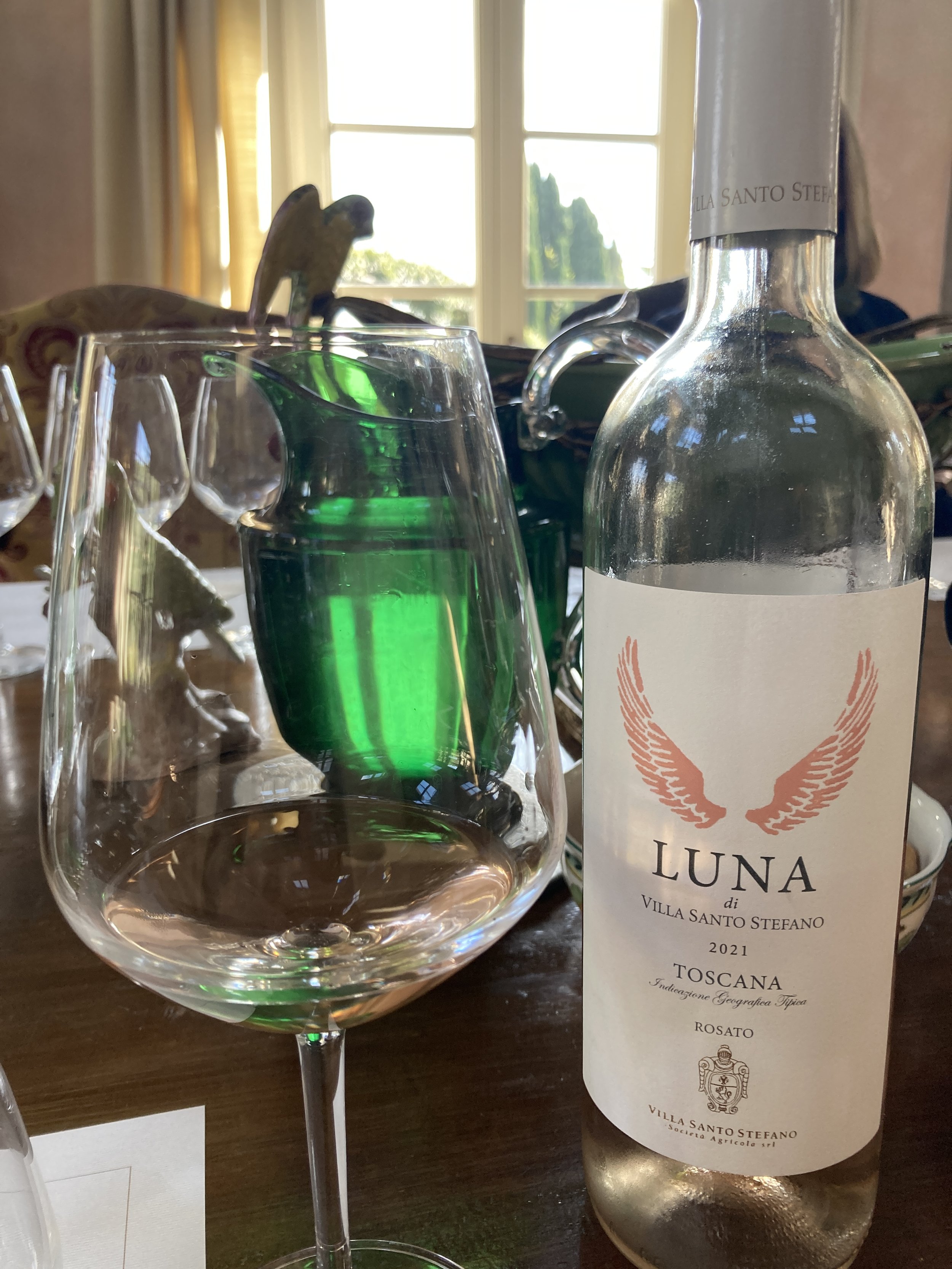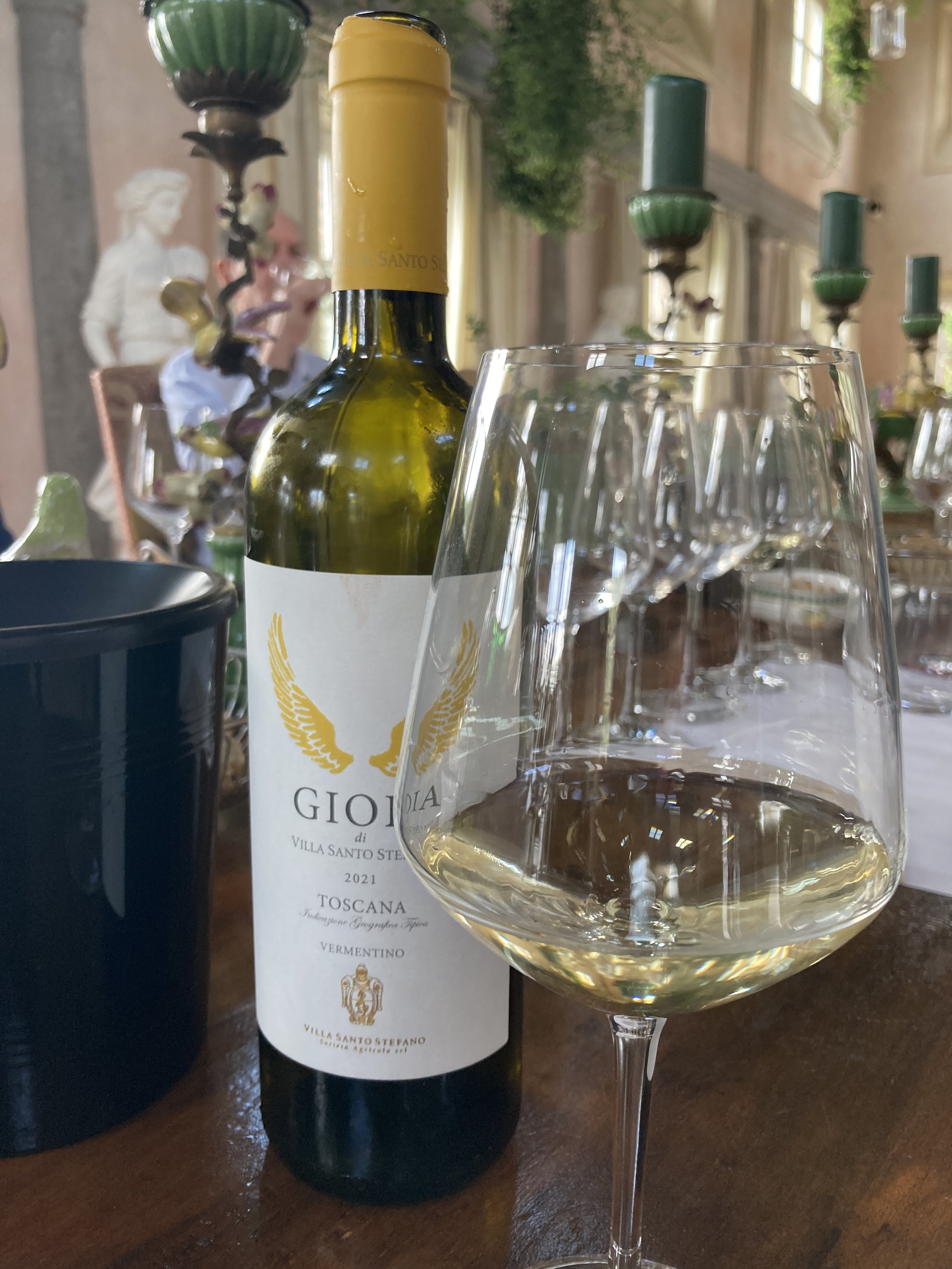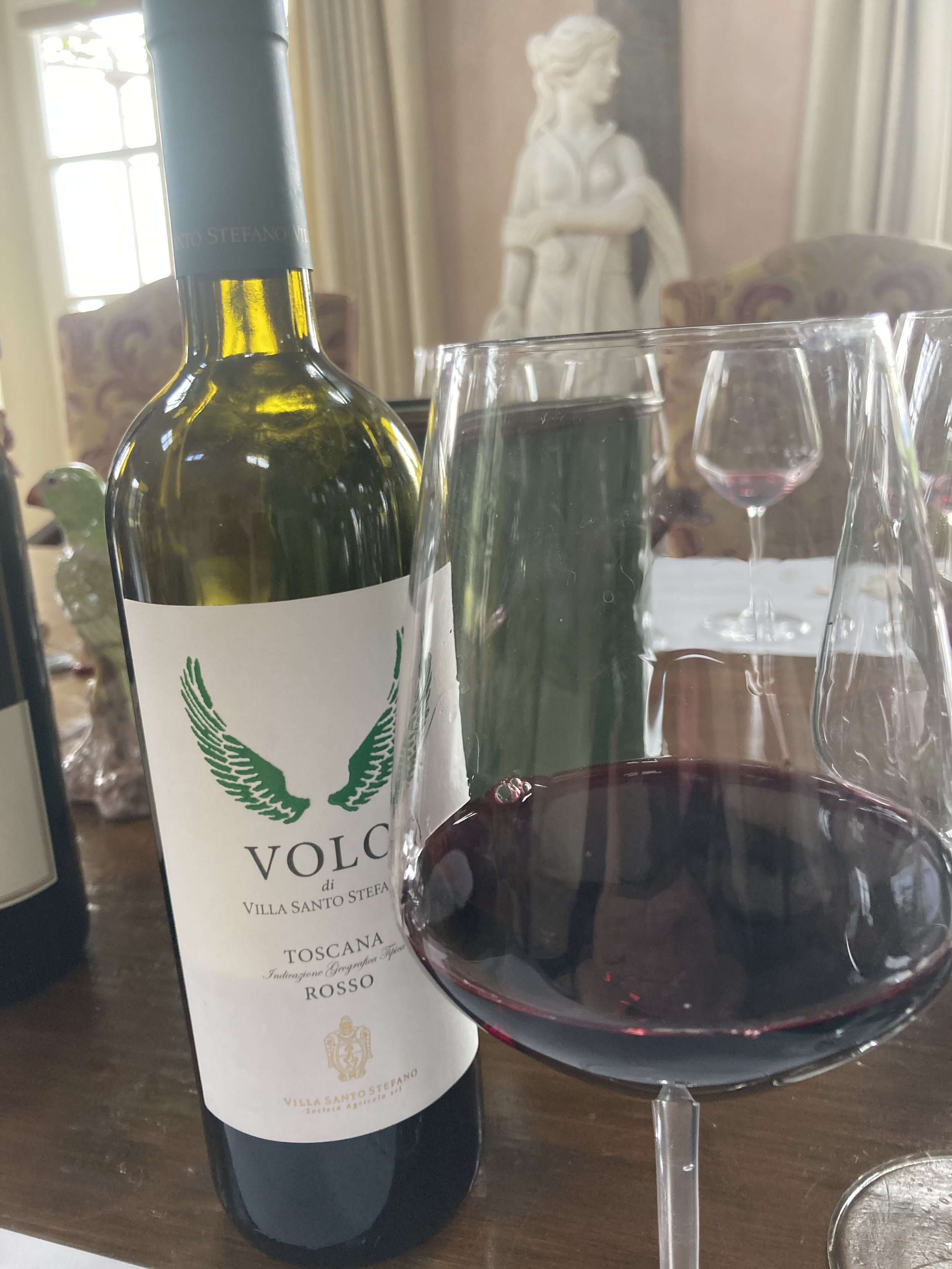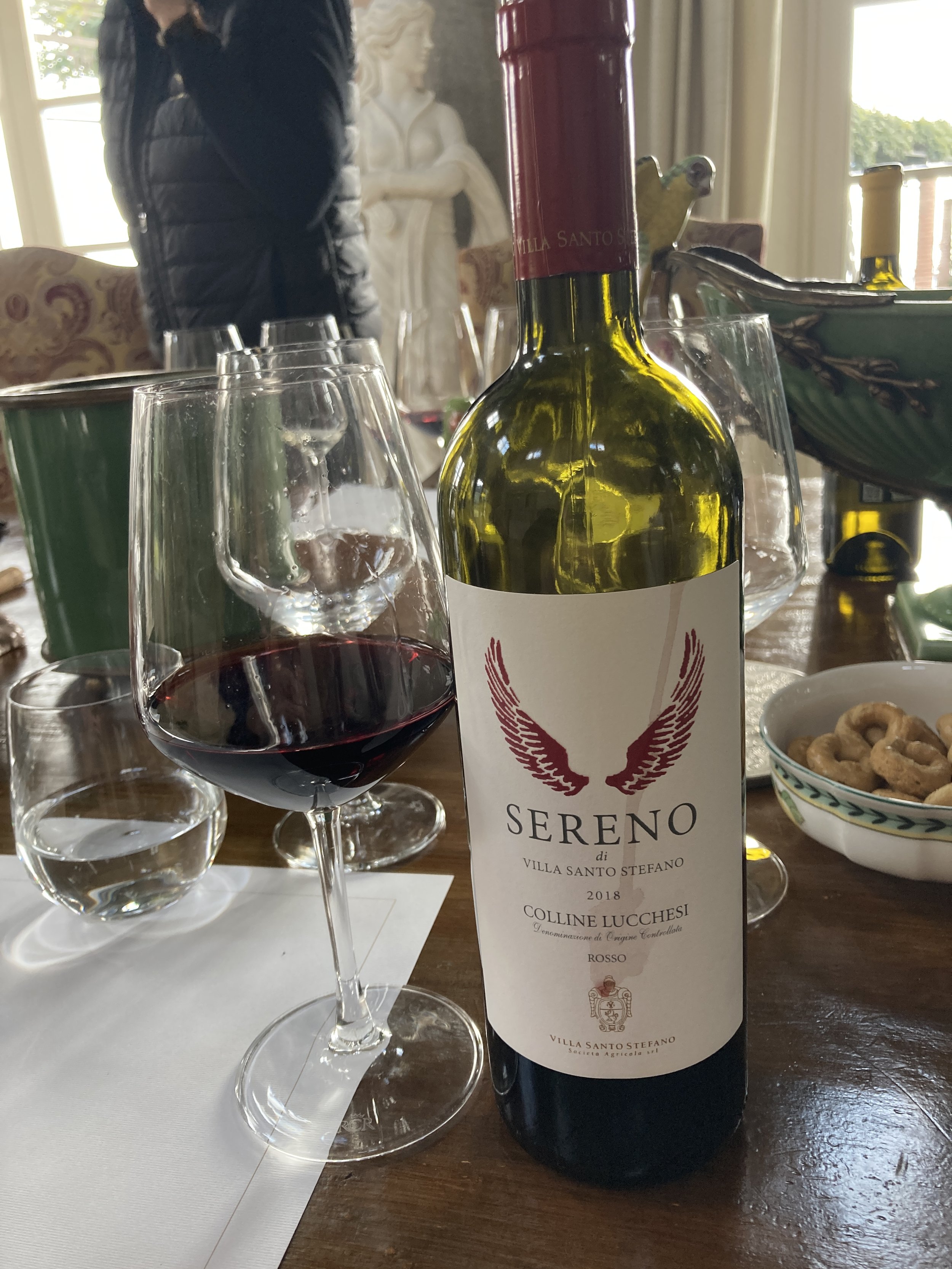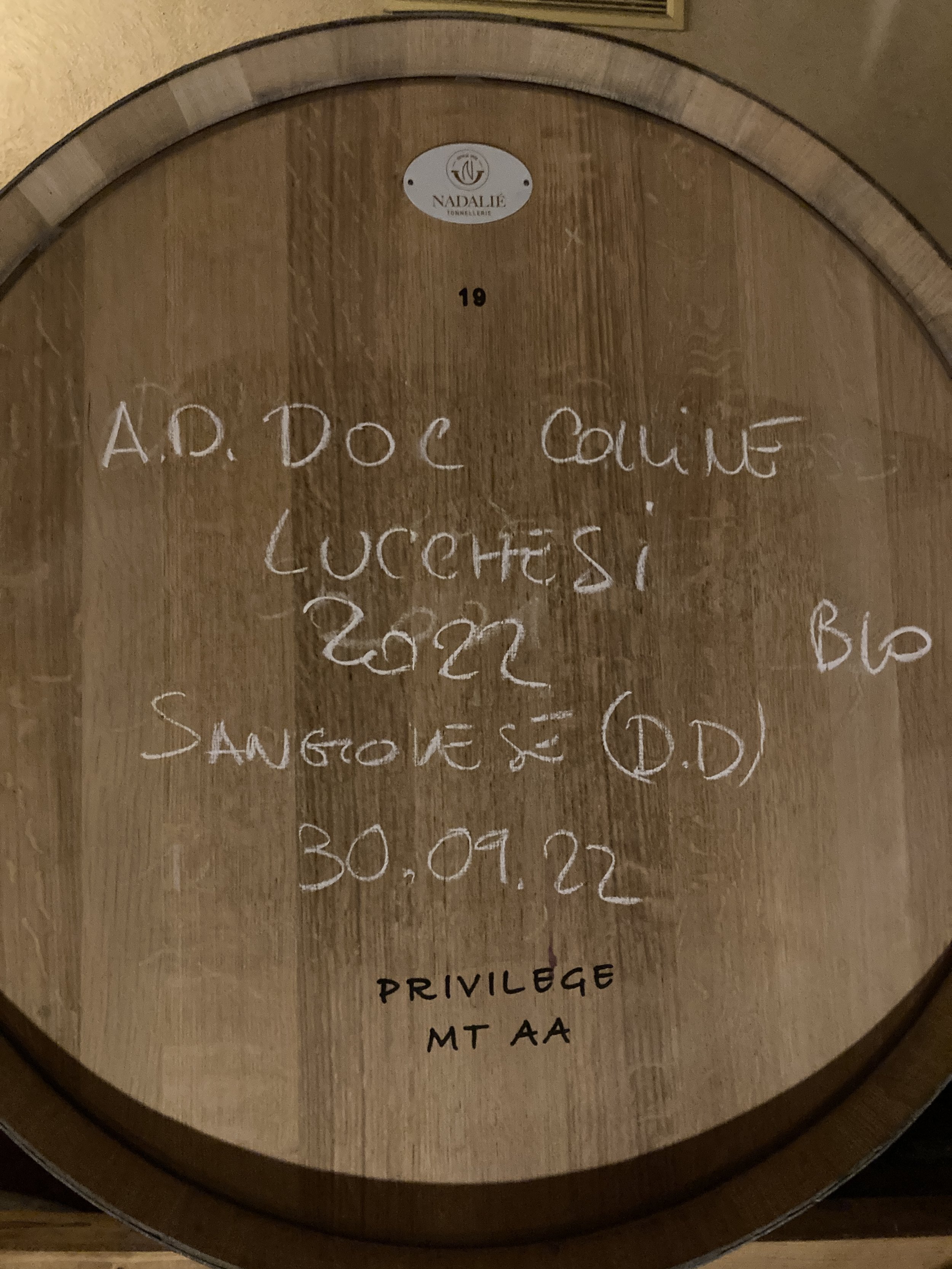Farina di Castagne
A list of the ingredients important in Italian cooking often includes olive oil, tomatoes, pancetta, artichokes, garlic, lemons, basil, Parmigiano Reggiano cheese, and balsamic vinegar. But let’s not forget about a more humble ingredient - chestnuts (castagne or marroni in Italian).
In Tuscany, the mountains are full of chestnut trees. It is no surprise then that the chestnut tree became a vital source of food, as well as of fuel and building material, especially during times of war, famine, and poverty.
Abundant and nutritious, the chestnut became an essential ingredient in Italian “cucina povera”. That traditional continues to this day. Chestnuts are eaten roasted or steamed. They are also dried and ground into flour, farina di castagne, for use in breads, pastas, and sweets.
Chestnut Roasting in Colognora di Pescaglia
Dishes made with farina di castagne appear on fall and winter menus. With its naturally sweet and nutty flavor, chestnut flour has become one of my favorite ingredients for baking.
My fondness for these dishes began at a fall festival where I first tasted Necci. Necci are round and flat, somewhere between a crepe and a pancake in thickness.
Like a crepe they can be rolled around a filling. The batter is very simple - just chestnut flour, water, and a pinch of salt. Traditionally, necci were cooked between testi, round stones heated over a fire. Today Necci are usually cooked between two long-handled, flat cast iron plates. The warm necci are then filled, most commonly with fresh ricotta and a drizzle of honey. Delicious!
These round stones, called testi, were the traditional method used to cook Necci. To learn more about chestnuts, visit the Chestnut Museum in Colognora di Pescaglia where this photo was taken.
Frittelle di Castagne, little fried chestnut fritters, served as an appetizer alongside fresh ricotta in the town of Pontremoli.
Similar to Necci are Frittelle di Castagne, often found in the areas of Tuscany known as the Lunigiana and the Garfagnana, both hilly areas in the north.
The batter is similar to Necci, but the preparation is different. Small scoops of batter are fried in oil, creating a crisp outside and tender inside.
While I think of frittelle as breakfast or dessert items, lightly sprinkled with sugar, they can also be served unsweetened as an appetizer with a bit of ricotta. That’s how I first encountered them last fall in a restaurant in the town of Pontremoli.
I have been working on learning to make both Necci and Frittelle di Castagne at home.
For Necci, simply combine 1 cup of chestnut flour (100-120 gm), sifted after measuring, with ¾ - 1 cup of warm water. Mix well.
Take a little taste of the batter – the sweetness will surprise you!
Either a heavy crepe pan or a non-stick skillet works to cook the Necci. Lightly butter the pan to prevent sticking, pour in about ¼ cup batter and spread with a fork or spoon to create a thin crepe. Cook until set, flip, and cook on the second side. Fill while warm with a couple of tablespoons of ricotta, drizzle with a little honey, roll up and enjoy! Makes 4-5 Necci.
For Frittelle di Castagne, combine 1 cup of chestnut flour (100-120gm), 1 teaspoon of baking powder, and a pinch of salt. Sift and add about 1 c. warm water (add about 3/4 of the water and then enough more to make a fairly thin batter). Mix well. Heat vegetable oil in a frying pan, deep enough to cover the bottom of a pan and about half-way up the frittelle (I use ¼ c. oil in a small 8 in frying pan, frying 2-3 frittelle at a time). Test the oil with a small drop of batter - it should have a lively sizzle and the batter should puff up slightly. Drop spoonfuls of batter into the hot oil, cook until the top is set and small bubbles appear, flip, and continue cooking until crisp and brown on both sides. Smaller is better for these fritters - small enough to cook through in just a couple of minutes and be crisp outside and not doughy inside. Remove from the oil and place on a paper towel to drain. Serve warm sprinkled with sugar or room temperature with a side of plain ricotta. Makes about 18 - 20 small fritters.
Now that I’ve learned how to make these traditional Italian dishes, I am working on incorporating chestnut flour into some other baked goods. Stay tuned!







